
Famous Living Artists Today: An Artist's Guide to Top Contemporary Stars
Discover the most famous living artists today through an artist's personal lens. Explore top contemporary painters, sculptors, digital innovators, and performance artists shaping the art world now, with insights into their influence, market impact, and how they inspire new talent.
Famous Artists Today: Who Are the Most Influential Living Contemporary Artists Right Now?
Trying to pin down the absolute "top" or "most famous living artists" – yeah, it feels a bit like trying to catch smoke, doesn't it? It's like trying to nail down that fleeting feeling you get when a line just works in a drawing, or the exact moment a splash of color transforms a canvas. Honestly, as an artist myself, I've spent countless hours in my studio wrestling with the idea of influence and recognition. Does it matter if anyone else sees it? Does it count if it only resonates with me? I remember one rainy afternoon, staring at a canvas that felt utterly complete to me, yet I knew, deep down, it might never leave the quiet solitude of my workspace. That feeling of profound personal connection to the work, contrasted sharply with the external whirlwind of the art world, where suddenly, the question of who is "famous" or "influential" feels less like a philosophical query and more like... well, a search query you might type into Google. You might be searching for "famous artists now" or even "famous visual artists today," hoping for a definitive list.
And while a simple ranking is elusive (and maybe even misses the point, like focusing only on the final painting and ignoring the sketches!), this guide aims to offer a clearer view, a map to some of the key figures – the famous artists right now who are actively shaping what art looks like, feels like, and means today. Think of this not as the only list, but a curated starting point, a conversation about some of the most highly regarded living contemporary artists, including many famous painters alive today and standout drawers. You might search for "modern artists today," and while we get what you mean, remember "contemporary" is the accurate term for artists currently working – those making art after the historical Modern Art period (roughly 1860s-1970s). Getting a feel for what art is in today's complex context really helps appreciate their diverse contributions. So, while definitively answering "who is the most famous painter right now" is tricky, this guide will introduce you to the names consistently in that conversation, presenting a curated look at famous artists that are alive today and why they matter.
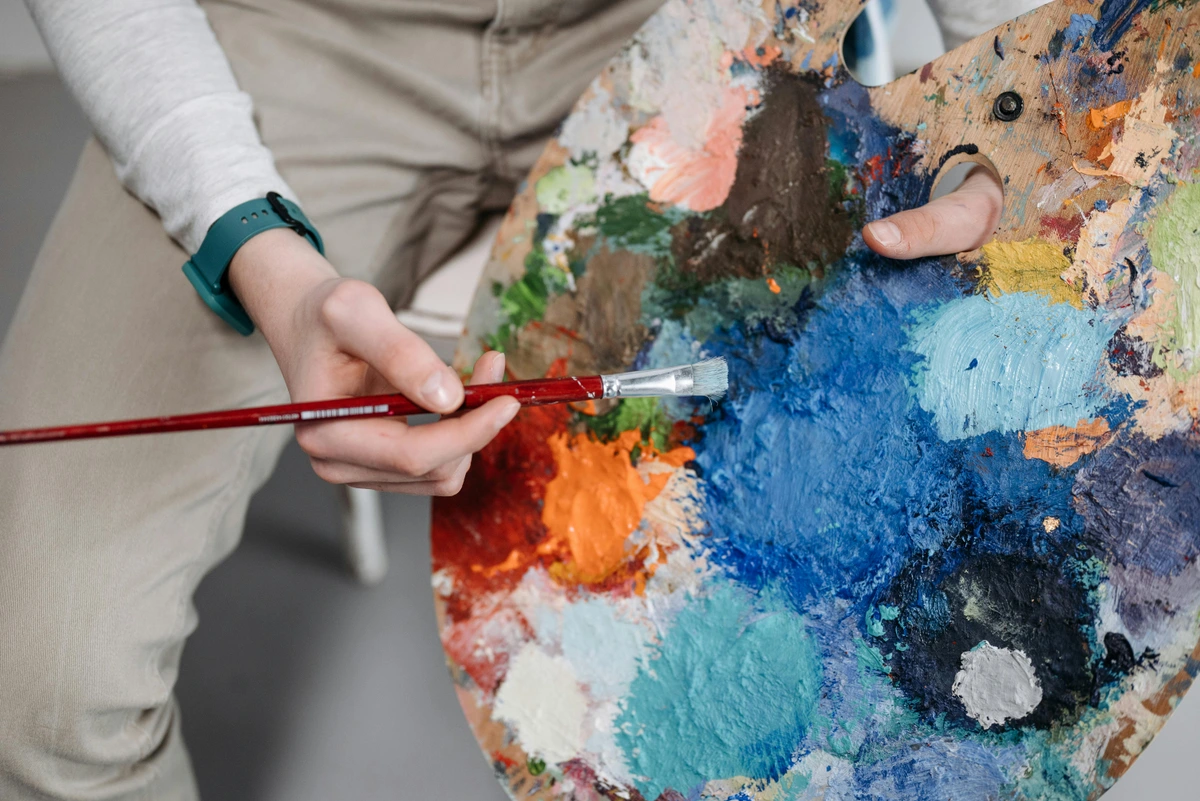
Understanding Influence and Recognition: How Do Artists Become "Famous"?
So, how does a living artist climb to this level of renown, becoming one of the well known artists today? As an artist myself, I've watched this process unfold, and it's a fascinating, sometimes bewildering, mix of factors accumulated over time. It's rarely one single thing, more like a potent cocktail of validation, discourse, market forces, and sheer impact. It's a bit like watching ingredients bubble away – you know something's cooking, but the exact moment it becomes that dish is hard to pinpoint. It involves a complex ecosystem of validation, discourse, market forces, and sheer impact. Honestly, sometimes it feels like trying to understand quantum physics while simultaneously juggling chainsaws. But let's break down some of the key ingredients.
- The Institutional Stamp of Approval: Getting solo exhibitions in major museums (think MoMA, Tate Modern, Centre Pompidou, Guggenheim), being selected for prestigious international events like the Venice Biennale (where Simone Leigh won the Golden Lion in 2022 and Sonia Boyce won for the British Pavilion the same year), Documenta in Kassel, Germany (like the influential Documenta 11 curated by Okwui Enwezor in 2002, which significantly shifted global perspectives), or key national showcases like the Whitney Biennial in the US, and influential regional platforms like the São Paulo Biennial or the Sharjah Biennial, is crucial validation. Having work acquired into world-class public and private collections further cements this. Winning major prizes like the Praemium Imperiale (awarded annually by the Japan Art Association for lifetime achievement in various arts), the Wolf Prize in Arts (awarded in Israel for achievements in science and arts), the Hugo Boss Prize (awarded biennially by the Guggenheim Museum to a contemporary artist), the Turner Prize (awarded annually by Tate to a UK-based artist under 50 - awarded to UK-based artists like Tillmans, Whiteread, Hirst, Emin, Perry, etc.), or receiving a MacArthur Fellowship ('Genius Grant', USA) also significantly boosts an artist's profile and provides vital support. You can see works by established and contemporary artists today in the best museums for modern art. And discovering contemporary art isn't just for global hubs; vital work happens in dedicated regional spaces too, like the Zen Museum in 's-Hertogenbosch which showcases both local and international talent. Getting into these institutions is like getting a golden ticket – it opens so many doors and signals that the art world's gatekeepers are paying attention.
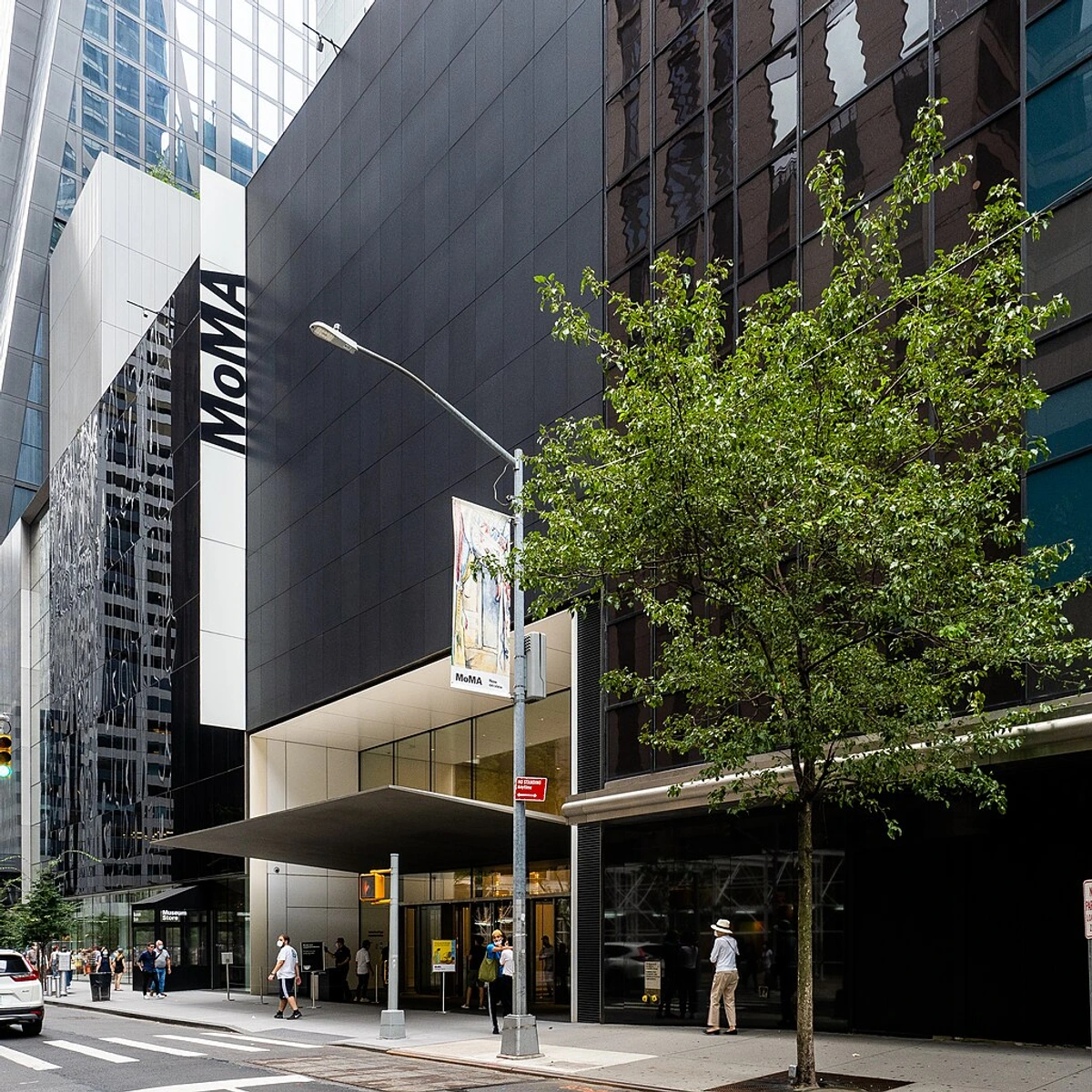
- Critical Acclaim and Discourse (The Power of Words and Ideas): It's not just about making the art; it's also about how it's talked about. When influential art critics (like Jerry Saltz, Roberta Smith), historians, academics, and especially curators write seriously about an artist, publish monographs (think Phaidon's contemporary artist series), include them in significant survey shows, and debate their work's meaning and impact, it solidifies their importance. Their art becomes part of the larger art historical conversation, shaping our understanding of modern art and contemporary practices. Sometimes specific critical concepts become associated with their work, like Institutional Critique for artists questioning museum/gallery structures (think Kruger, Ai Weiwei, Cady Noland, or Hans Haacke), the 'Abject' for those exploring bodily limits and societal taboos (Emin, Saville, Kiki Smith), Relational Aesthetics (coined by Nicolas Bourriaud to describe art focused on social interaction, relevant to artists like Tiravanija or Theaster Gates), or the ideas explored in key critical texts like Hal Foster's "The Return of the Real." The curators behind major exhibitions play a massive role here – figures like Hans Ulrich Obrist (Serpentine Galleries, known for his marathon interviews), Thelma Golden (Studio Museum in Harlem, champion of Black artists), Massimiliano Gioni (New Museum, curator of the 2013 Venice Biennale "The Encyclopedic Palace"), or the late Okwui Enwezor (whose Documenta 11 was groundbreaking) have significantly shaped the careers of many famous artists alive and the direction of contemporary art discourse. It's a reminder that the conversation around the art is almost as important as the art itself, sometimes even more so, which can be a bit frustrating when you're just trying to make something honest in the studio.
- Art Market Muscle (and the Role of Collectors): Let's be real, money talks in the art world. Consistent high demand from serious collectors, representation by powerful, globally connected galleries like Gagosian, Hauser & Wirth, David Zwirner, Pace Gallery, White Cube, Thaddaeus Ropac, Victoria Miro, or Lévy Gorvy (now LGDR) is a major signifier. Strong regional players also matter, like Blum & Poe (LA/Tokyo/NY) or Galerie Eigen + Art (Berlin/Leipzig) shaping careers. Achieving strong prices – sometimes record-breaking sums for artists like Hockney, Koons, or Richter – at major auction houses like Christie's, Sotheby's, and Phillips on the secondary art market are undeniable indicators of status and desirability. Art advisors often play a significant role in guiding collectors at this high end. Understanding art prices involves looking at these market forces alongside artistic merit. Beyond individual collectors, influential private foundations and museums established by collectors like The Broad (Eli and Edythe Broad, Los Angeles), the Rubell Museum (Don and Mera Rubell, Miami/DC), the Pinault Collection (François Pinault, Venice/Paris), or the Fondation Louis Vuitton (Bernard Arnault, Paris) wield enormous power through acquisitions, commissions, and exhibitions, significantly boosting the profiles of the artists they support. While works by these top living artists can fetch astronomical sums, you can still engage with exciting contemporary art by acquiring pieces directly from talented living artists earlier in their careers. The market side can feel a bit opaque, and honestly, the sums can sometimes feel a little absurd when you're just trying to make something meaningful in your studio, but it's undeniably a huge factor in who gets seen and valued at the highest levels. It's a strange dance between creativity and commerce.
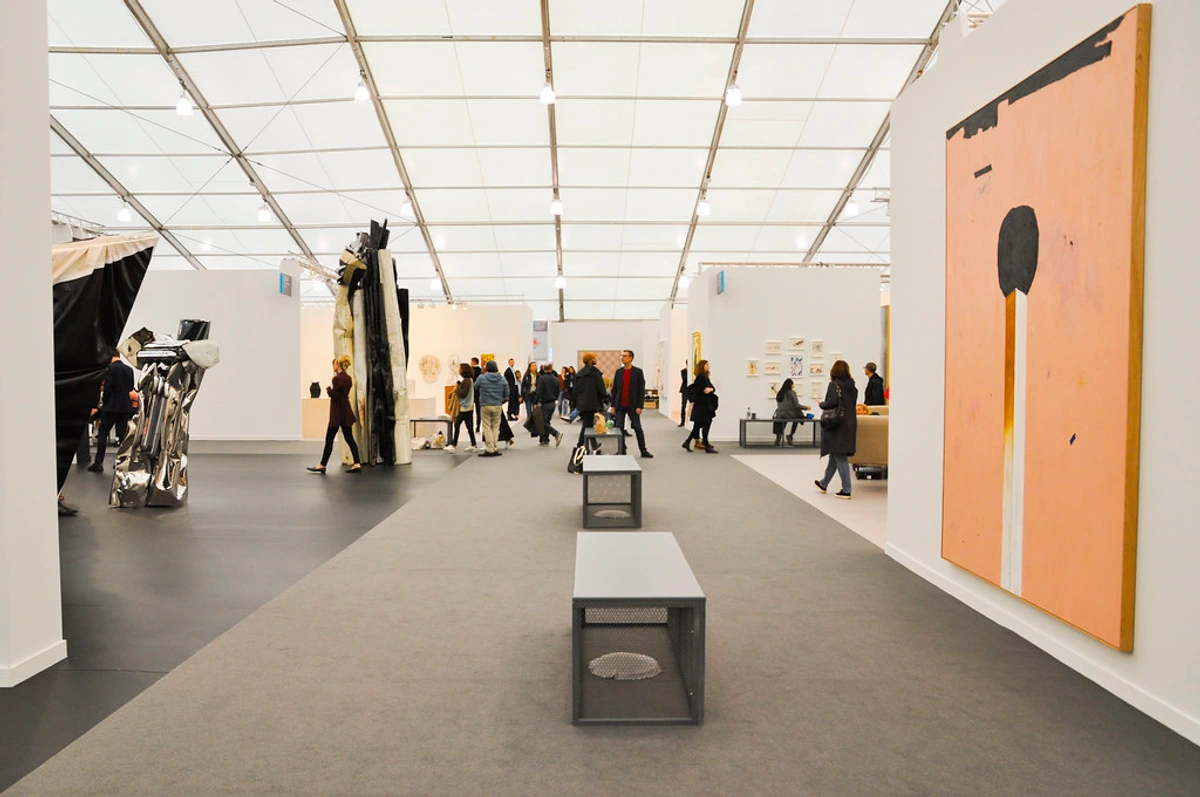
- Innovation and Impact: The artists who truly endure often break new ground. They might pioneer a technique (like Richter's blur or Kentridge's animation), radically challenge conventions (like Baselitz's inversions or Abramović's endurance), invent a new aesthetic language (like Murakami's Superflat or Mutu's Afrofuturism), or create work that profoundly resonates with and inspires subsequent generations of artists. Think of the ongoing influence of Sherman on portrait photography or Wool on process painting. Their ideas ripple outwards, affecting visual culture more broadly. These are the artists who make you think, "I've never seen anything like that before," the ones who shift the conversation and open up new possibilities for others.
- Public Fame, Legacy, and the Artist's Hand: This is slightly different from critical acclaim or market value. Some artists achieve widespread public recognition that extends beyond the art world cognoscenti – think Kusama's incredibly popular (and Instagrammable) Infinity Rooms, Banksy's headline-grabbing stunts and anonymity, Hockney's accessible charm and colorful work, or Wiley's presidential portrait becoming a cultural touchstone. This kind of fame makes them household names (or close to it) and directly answers the "famous" part of searches for famous artists now. Establishing dedicated artist foundations, like the Hockney Foundation or Anish Kapoor Foundation, can also shape public perception and legacy, much like the historical Judd Foundation model. Furthermore, for highly established living artists, their studio archives or dedicated artist archives (sometimes managed externally) play a crucial role in preserving their process, documenting their work (essential for catalogues raisonnés), and managing their ongoing legacy even before they pass – think of the meticulous organization required for figures like Richter or Stella. It’s part of cementing their place in history while they're still making it. It's fascinating to see how some artists become cultural icons, recognized far beyond the gallery walls, a kind of fame that feels both earned and a little bit mysterious.
Leading Living Artists by Practice: Shaping Contemporary Art
Instead of just a flat list, let's explore these influential figures grouped by their primary artistic playground – whether it's painting, sculpture, photography, performance, or something blending the boundaries. This helps if you're specifically curious about, say, the top contemporary painters or installation wizards making waves among artists today. It's always a bit subjective, this categorizing, as so many brilliant minds work across disciplines, but it gives us a useful starting point. And remember, this list isn't exhaustive! Think of it as opening a door – there are so many more incredible artists out there, including powerful voices from regions and practices gaining increasing, much-deserved prominence. While this list is heavily weighted towards artists with significant visibility in Western art institutions and markets, it's a crucial starting point for understanding the global conversation, which is thankfully becoming more diverse.
Painters: Where Brushstrokes Still Make Waves (and Sometimes Break Them)
This is often where the "most famous" debates get most heated, maybe because painting has such a long, loaded history. Here are some of the most famous living painters consistently recognized for keeping the medium vibrant, relevant, and often, pushing its very definition:
- Njideka Akunyili Crosby (b. 1983, Nigerian-American): Crosby creates intricate, large-scale mixed-media works on paper that feel both intimately domestic and culturally expansive. Combining drawing, painting, collage, printmaking, and photo transfers (often using images from Nigerian magazines or family photos), she depicts scenes exploring cultural hybridity, postcolonial identity, diaspora, and the complex feeling of navigating multiple worlds. Her layered approach, like in her series "The Beautyful Ones", feels like piecing together memories – a process I find incredibly relatable in my own work, reflecting how personal histories are never just one simple story, but a collage of experiences and images. A MacArthur Fellow (2017), her work gained significant attention through shows like the 2016 Montreal Biennial.
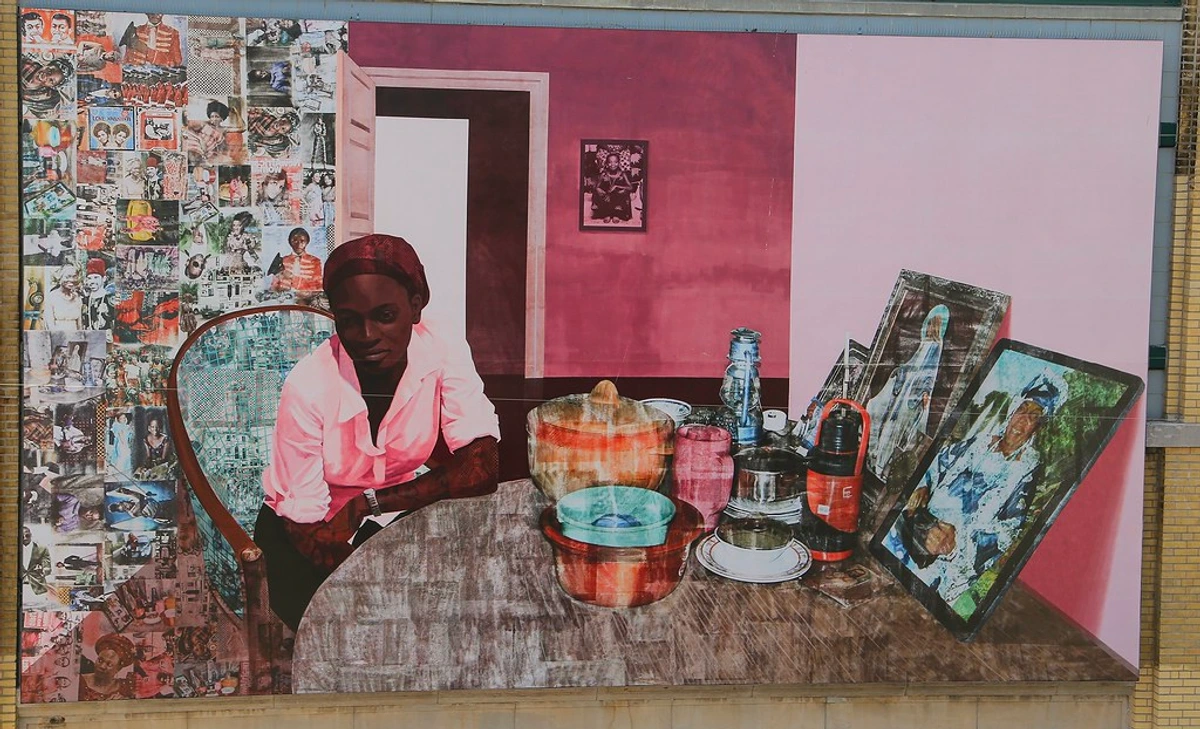
- Georg Baselitz (b. 1938, German): Famous for turning the art world literally upside down! Baselitz is a key figure in German Neo-Expressionism, known for his raw, expressive paintings (often featuring figures inverted to force focus on form and color over subject, as seen in his "Remix" series or iconic works like "The Great Friends" where figures are depicted upside down) and equally visceral wood sculptures. This inversion doesn't just challenge how we look; it feels like the weight of German history literally bearing down on the figures, forcing a confrontation with the past. He challenges how we look and confronts uncomfortable historical truths head-on. His influence on subsequent generations of German painters grappling with history is undeniable. Dig deeper into his work with the ultimate guide to Georg Baselitz.
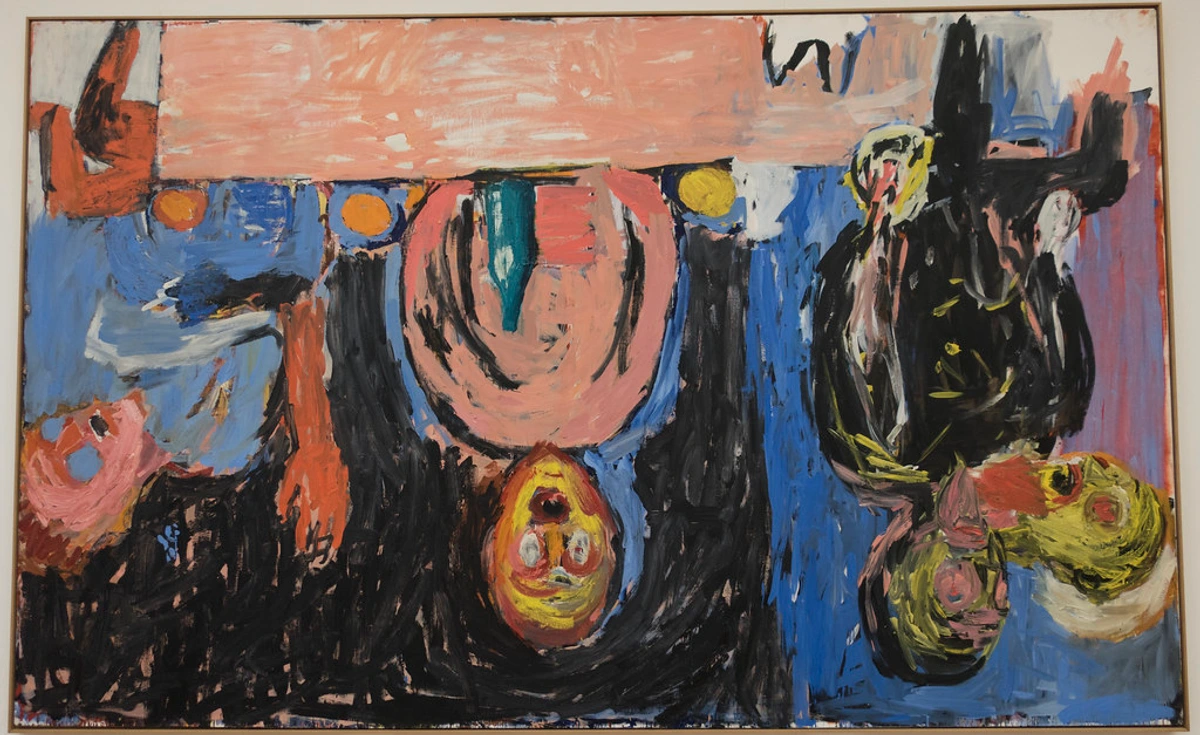
- Mark Bradford (b. 1961, American): Bradford builds monumental abstract paintings not just with paint, but with layers upon layers of found materials – billboard paper, posters, merchant flyers, newsprint – sourced from urban environments, particularly his South Central LA neighborhood. Using techniques of collage and décollage (sanding, tearing, gouging away layers), he creates textured, topographical "maps" (like "Helter Skelter I" or "Merchant Posters" series) that address complex social issues like race, poverty, gentrification, and community history. His work reminds me that even the most mundane materials can hold profound stories, layered and hidden just beneath the surface, much like the history of a city itself. He represented the US at the 2017 Venice Biennale and is also a MacArthur Fellow (2009).
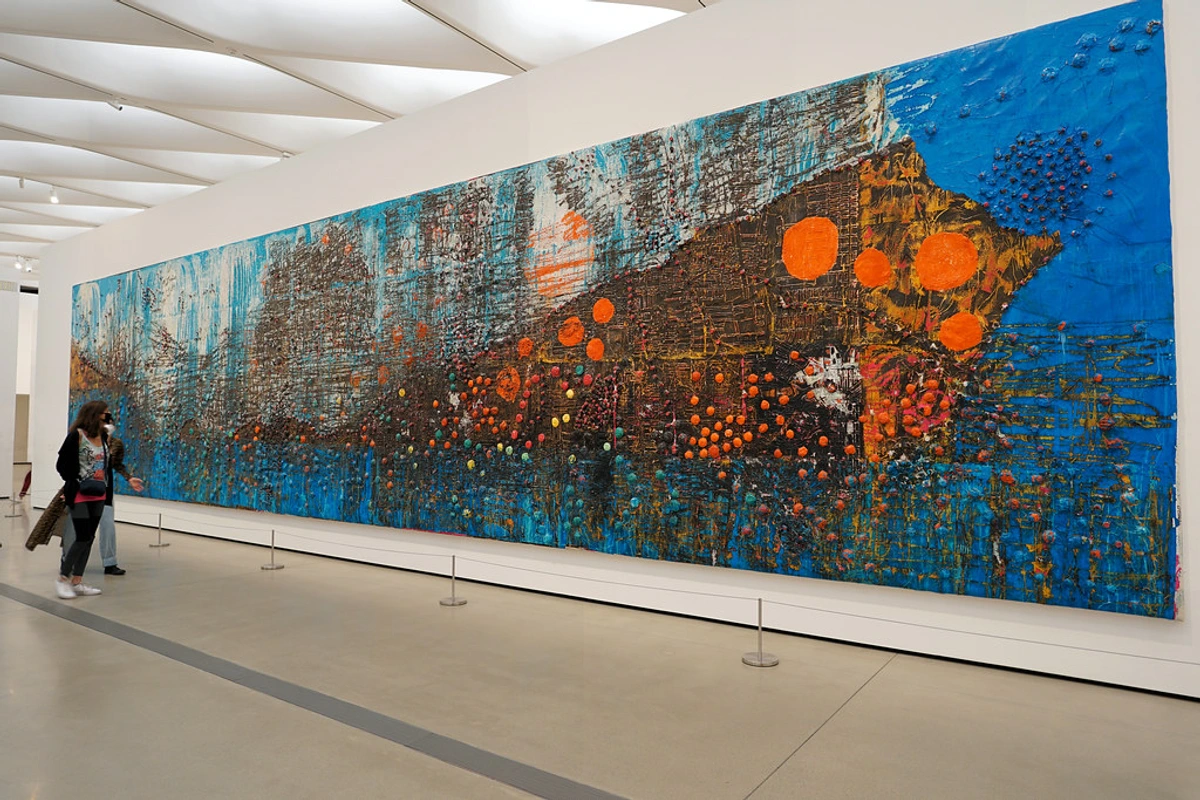
- Cecily Brown (b. 1969, British): Known for turbulent, semi-abstract paintings where figurative elements, often fragmented human forms, emerge and dissolve within energetic, sensuous brushwork. Her work crackles with movement, rich color, and a palpable tension between abstraction and figuration, often referencing art historical masters from the Baroque to the Abstract Expressionists. Looking at her paintings feels like stepping into a vibrant, slightly chaotic dream, full of energy and fleeting forms – a feeling I often chase in my own work. Her ability to make paint feel so alive is something I deeply admire.
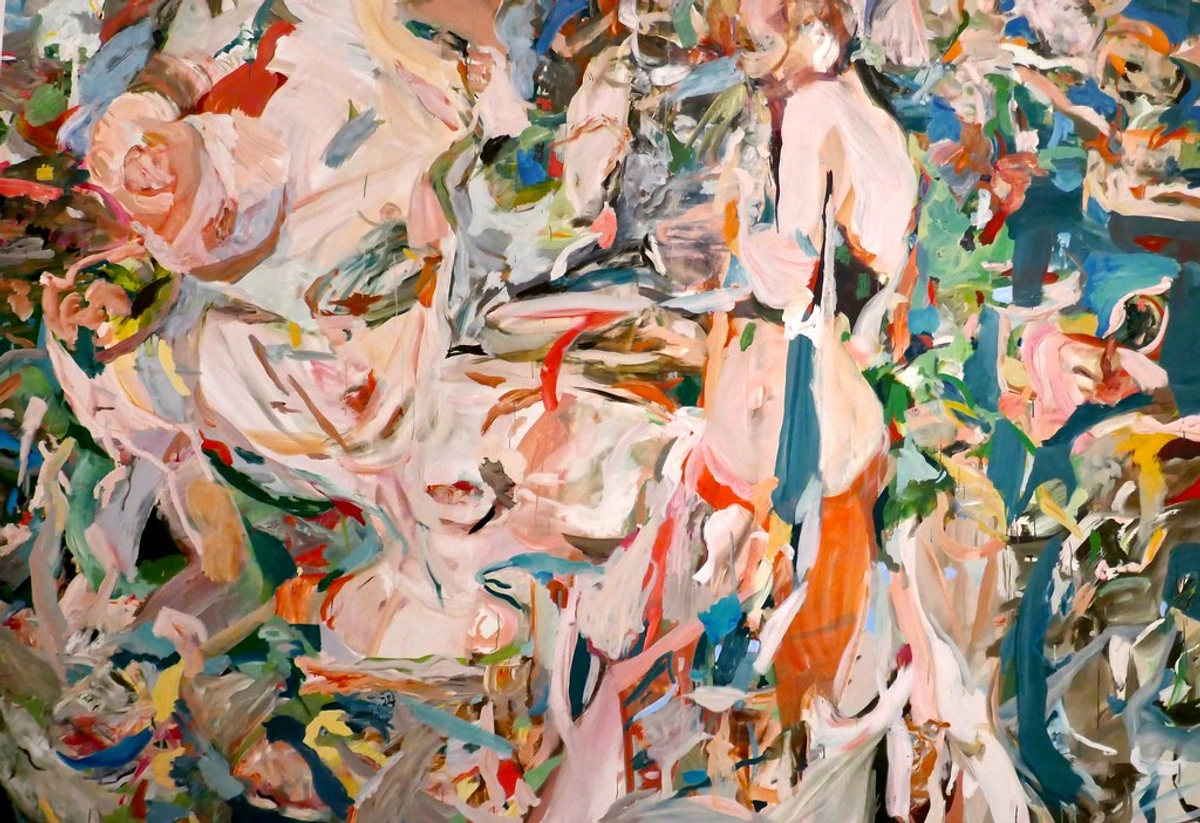
- Vija Celmins (b. 1938, Latvian-American): You have to admire the sheer patience and focus here. Celmins is revered for her incredibly meticulous drawings and paintings depicting natural surfaces like oceans, deserts, night skies, and spiderwebs. Working often from photographs, she renders these vast or intricate subjects with extraordinary detail and subtlety, usually in grayscale using graphite, charcoal, or oil paint (her "Night Sky" series or drawings of "Ocean Surface" are iconic). It’s not about grand gestures, but about intense observation and the quiet power of representation. Her work makes you look closer, and it's a powerful reminder of the beauty in detail, something I strive for in my own timeline of work. A MacArthur Fellow (1997), her major retrospectives (like the one originating at SFMOMA in 2018) solidify her status. Her dedication to rendering these infinite details feels almost meditative, capturing the sublime in the seemingly mundane.
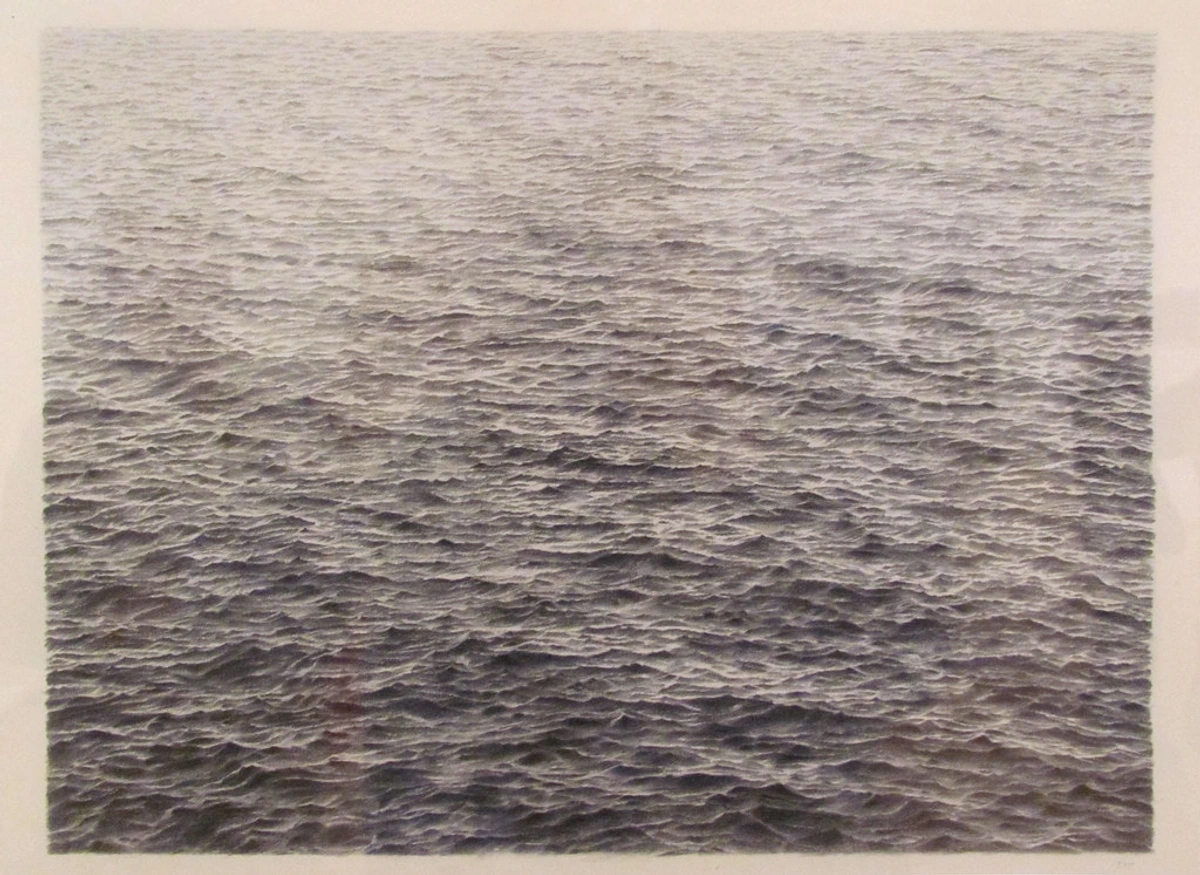
- George Condo (b. 1957, American): Condo coined terms like "Artificial Realism" and "Psychological Cubism" to describe his unique, virtuosic style. His portraits are often grotesque, fractured, cartoonish, and unsettling, yet psychologically gripping. He masterfully blends influences from Old Masters, Cubism, Surrealism, cartoons, and caricature to explore the fractured nature of the contemporary psyche. His work is unsettling, yes, but also hilariously insightful about the weirdness of being human. It makes me think about how we all feel a bit fragmented sometimes, and he just puts it right there on the canvas, revealing the absurdity beneath the surface.
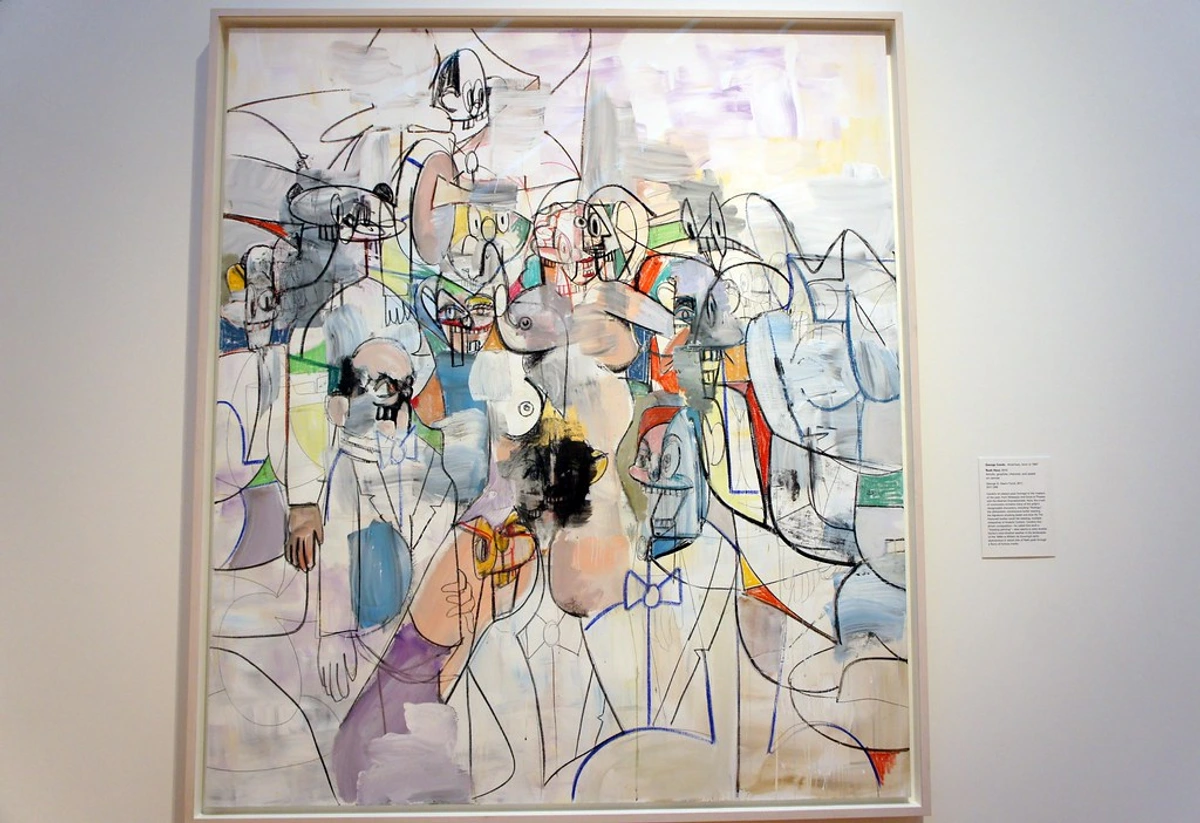
- Peter Doig (b. 1959, Scottish): A highly influential painter whose dreamlike, enigmatic landscapes often feature lone figures, canoes (like in his famous "White Canoe" or "Swamped"), uncanny architectural elements, or reflections in water. Drawing inspiration from memory, personal photos, film stills, and art history, his richly textured and evocative canvases hover mesmerizingly between reality, memory, and imagination. His influence is seen in a generation of painters exploring narrative and atmosphere in landscape. Explore his world in our guide to Peter Doig. His ability to infuse landscapes with a sense of mystery and longing feels deeply resonant.
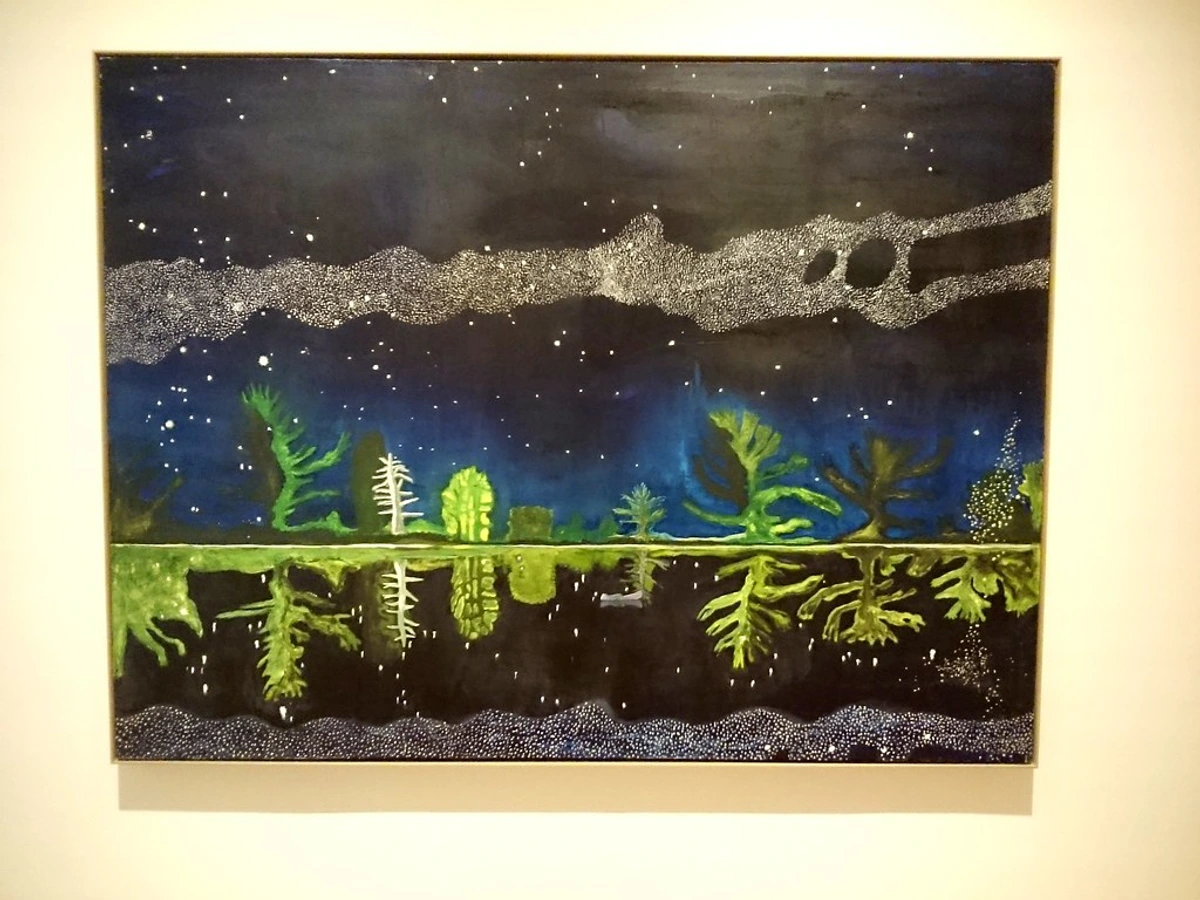
- Adrian Ghenie (b. 1977, Romanian): Ghenie's richly textured, layered figurative paintings often depict historical figures (like Darwin, Van Gogh, or WWII figures in his "Pie Fight" series) or anonymous characters whose features seem to melt, distort, or be scraped away. His work delves into the traumas of memory, the anxieties of history, and the fragmented nature of identity in the 20th and 21st centuries with a palpable, almost visceral energy. His representation of Romania at the 2015 Venice Biennale was a key moment. His paintings feel like history being simultaneously remembered and forgotten, a messy, powerful process that speaks to the difficulty of confronting the past. For more, check the ultimate guide to Adrian Ghenie.
- Damien Hirst (b. 1965, British): Love him or loathe him, Hirst is undeniably one of the most famous artists today. A leading figure of the provocative Young British Artists (YBAs), he courts controversy and headlines with works exploring life, death, science, belief, and the machinations of the art market – think iconic pieces like "The Physical Impossibility of Death in the Mind of Someone Living" (the shark in formaldehyde), the diamond-encrusted skull "For the Love of God," and meticulously arranged "Spot Paintings" or "Spin Paintings." His immense market success is itself a phenomenon, making him a case study in understanding art prices. His work forces you to confront big, uncomfortable ideas, often with a dose of dark humor, pushing the boundaries of what art can be and how it functions in the world. Dive deeper with our ultimate guide to Damien Hirst.
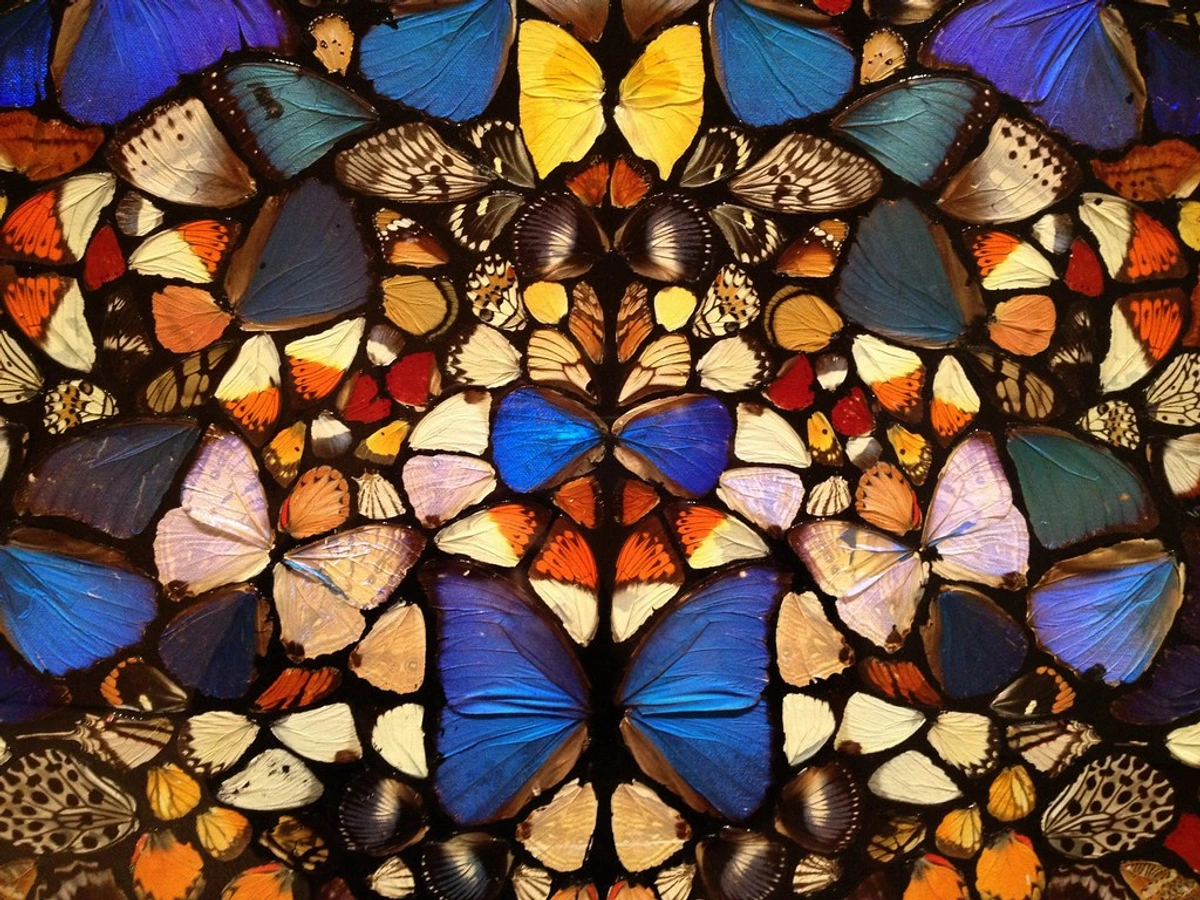
- David Hockney (b. 1937, British): A true titan of British Pop Art and undeniably one of the most famous painters alive today. His instantly recognizable style captures sun-drenched LA pools (like "A Bigger Splash" or "Portrait of an Artist (Pool with Two Figures)"), intimate portraits, and vibrant landscapes with an infectious joy. What keeps him perpetually relevant isn't just skill, but relentless innovation – embracing everything from Polaroid composites to stunning iPad drawings (like his "The Arrival of Spring in Woldgate" series). This tech adoption also makes him a key figure for famous drawers today. Hockney doesn't just paint; he makes you see light and space differently. He even established the David Hockney Foundation to manage his legacy. His major 2017 retrospective spanning Tate Britain, Centre Pompidou, and the Met cemented his global icon status. His embrace of new tools like the iPad is something I really admire – it shows you can keep evolving, no matter how established you are, constantly finding new ways to capture the world's vibrancy.
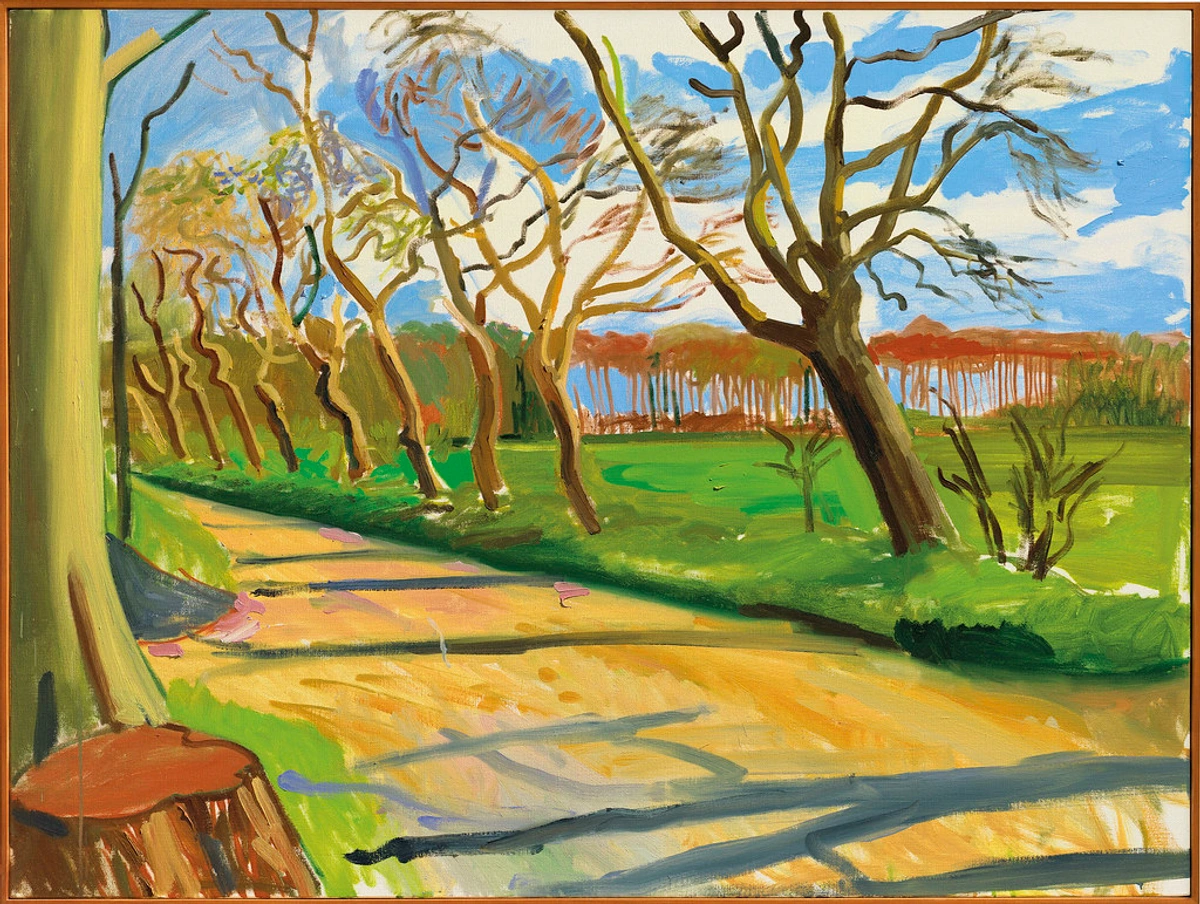
- Anselm Kiefer (b. 1945, German): Kiefer's work isn't light viewing; it carries weight. His monumental, often somber paintings and sculptures grapple with the immense burden of history, myth, spirituality, and German identity after WWII (consider his "Margarethe" and "Sulamith" paintings referencing Paul Celan's poem "Todesfuge," or his vast, material-laden landscapes like "Osiris and Isis"). He incorporates materials like straw, ash, lead, and dried flowers, creating deeply textured, symbolic landscapes that feel both ancient and urgent. Understanding his use of materials often involves delving into how to understand symbolism. Awarded the Praemium Imperiale in 1999 and the Wolf Prize in Arts in 1990, his impact is profound. His work feels like walking through a scarred landscape, heavy with the past, a powerful reminder of history's physical and emotional weight. For an essential deep dive, see our ultimate guide to Anselm Kiefer.
- Yayoi Kusama (b. 1929, Japanese): While globally famous – practically a phenomenon – for her immersive installation art (those irresistible "Infinity Mirror Rooms" like "Phalli's Field" or "The Souls of Millions of Light Years Away"!), Kusama's painting practice, filled with iconic polka dots and "Infinity Nets," is foundational to her work. Her obsessive, psychedelic patterns spring from deep psychological themes and have achieved truly phenomenal public recognition, making her one of the most famous living artists across any medium. Her fame transcends the art world bubble. Awarded the Praemium Imperiale in 2006. Stepping into one of her Infinity Rooms is an experience I won't forget – it's overwhelming and strangely calming at the same time. Her ability to translate her internal world into such universally captivating experiences, tapping into universal feelings of anxiety and infinity, is remarkable.
- Kerry James Marshall (b. 1955, American): Marshall has dedicated his influential career to correcting the historical invisibility of Black figures in Western art. His compelling, large-scale paintings, like "Past Times," or the "Garden Project" series, depict unequivocally Black subjects in everyday settings – homes, barbershops, gardens – but imbues them with historical resonance, cultural richness, and undeniable presence, actively challenging the traditional art historical canon. A MacArthur Fellow (1997), his 2016-2017 retrospective "Mastry" traveled to major US museums, solidifying his critical importance. His work feels like a powerful, necessary correction to centuries of omission, a quiet assertion of presence that resonates deeply and reshapes the narrative of art history.
- Julie Mehretu (b. 1970, Ethiopian-American): Mehretu creates breathtakingly complex, large-scale abstract paintings and drawings that feel like maps of our chaotic modern world. Layering architectural plans, cartographic elements, and diagrams with energetic, calligraphic marks and explosions of color (seen in works like "Mural" at Goldman Sachs or her "Grey Area" series), she explores globalization, migration, revolution, and the dizzying density of urban life. Her intricate drawing is also a major component of her practice (see Focus on Drawing below). Also a MacArthur Fellow (2005). Her paintings are so dense and layered, they feel like trying to process all the information of a city at once, a visual representation of contemporary overwhelm and interconnectedness, capturing the energy of global movement.
- Takashi Murakami (b. 1962, Japanese): The mastermind behind the "Superflat" aesthetic – a term he coined and explored extensively in critical writing and curation, analyzing the flattening of visual culture in post-war Japan – Murakami joyfully blends high art, pop culture, anime, manga, and consumerism into a dizzying, vibrant universe. His paintings and sculptures, often featuring recurring characters like Mr. DOB or his smiling "Flower" motifs, challenge traditional art hierarchies with wit and visual punch, finding massive success in both galleries and commercial collaborations (like his famous work with Louis Vuitton). It's hard not to smile when you see his work – it's pure, energetic visual fun, even with the underlying critique. His ability to move between fine art and commercial design is fascinating, demonstrating the porous boundaries between different cultural spheres today.
- Yoshitomo Nara (b. 1959, Japanese): You've probably seen his work, even if you didn't know the name – those instantly recognizable kids (or maybe dogs?) with the big heads and surprisingly complex expressions, often looking mischievous, lonely, or downright defiant. Nara is a giant in contemporary Japanese art, drawing heavily from punk rock, folk art, manga, and his own childhood memories. It's easy to dismiss it as just "cute," but spend some time with them, and you feel a real depth, a mix of innocence and angst that somehow captures a universal feeling. His work, spanning painting, drawing, and sculpture, has this incredible cult following that's ballooned into global acclaim. For me, seeing his work feels like tapping into a shared, slightly rebellious nostalgia, speaking to the enduring complexities of childhood emotion. Dive deeper with the ultimate guide to Yoshitoma Nara.
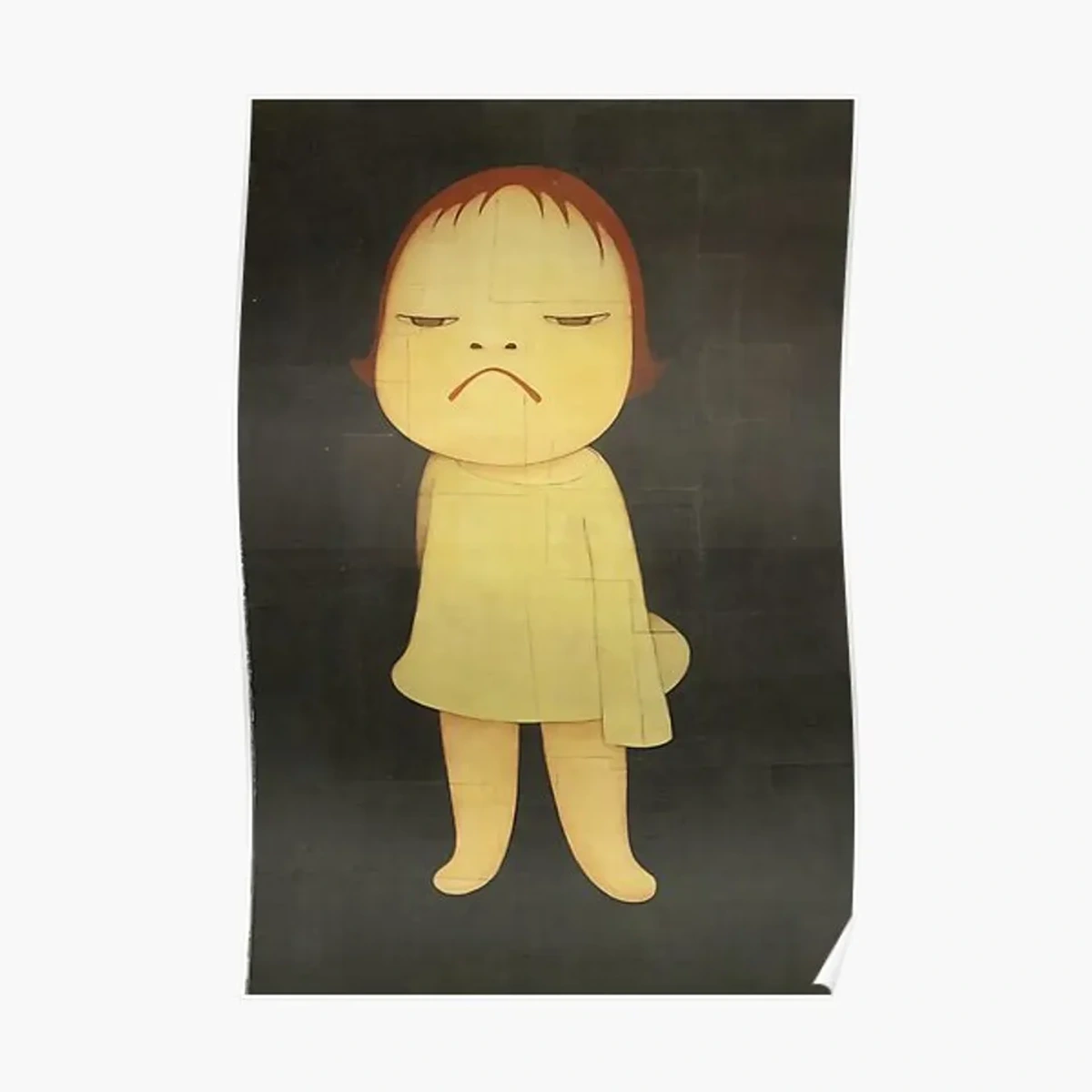
- Raymond Pettibon (b. 1957, American): Though arguably just as famous as a drawer (see Focus on Drawing below), Pettibon's raw, energetic paintings share the same DNA. Merging his distinctive, often unsettling ink drawings with bold text (sometimes poetic, sometimes scathing, often sourced or appropriated), his work rips into American culture, history, politics, and pop iconography – think surfers, baseball players, Gumby, Charles Manson. It feels immediate, visceral, like flipping through a darkly satirical zine blown up to gallery scale. He came up through the Southern California punk scene, designing iconic flyers and album covers (especially for Black Flag, fronted by his brother), and that raw, DIY energy still pulses through his work. His combination of image and text is so specific and powerful, it's instantly recognizable, demonstrating the enduring power of counter-culture aesthetics.
- Elizabeth Peyton (b. 1965, American): Renowned for her small, jewel-like, intimate portraits of friends, lovers, celebrities, historical figures, and fellow artists. Rendered with fluid, economical brushwork and vibrant, often unexpected color, her paintings and drawings capture fleeting moments of intensity, vulnerability, or quiet contemplation, creating a distinct contemporary mood. Her distinctive drawing style is also significant. Her portraits feel incredibly personal, even if you don't know the subject, capturing something essential about the sitter with just a few strokes and a palpable sense of contemporary longing.
- Gerhard Richter (b. 1932, German): Revered, influential, and commanding staggering prices, Richter is a critical darling and market heavyweight. His career is a fascinating dance between hauntingly blurred photorealistic painting (like his "Candle" paintings or the harrowing "October 18, 1977" (Baader-Meinhof) series) and bold, gestural abstract expressionism ("Abstrakte Bilder"). He constantly interrogates the slippery relationship between painting, photography, memory, and perception, as explored in critical texts like Dietmar Elger's biography or Benjamin H. D. Buchloh's essays. If you're looking for critical acclaim among living painters, Richter is always near the top. His influence on subsequent generations of painters exploring abstraction and photo-based work is undeniable. Recipient of the Praemium Imperiale (1997) and the Wolf Prize in Arts (1994/95). His ability to master both photo-realism and abstraction feels almost contradictory, yet he makes it work with incredible depth, constantly questioning the very nature of images and reality.
- Faith Ringgold (b. 1930, American): A vital figure whose work spans decades, Ringgold is perhaps best known for her powerful narrative quilts, which combine painting, quilted fabric, and storytelling (often handwritten text) to address African American history, identity, feminism, and social justice. Works like "Tar Beach" (part of her "Woman on a Bridge" series) or "American People Series #20: Die" have become iconic, blending personal memory with broader historical narratives. She's also a painter, sculptor, and author, making her a truly multifaceted artist whose influence continues to grow, recognized by numerous honors including a Guggenheim Fellowship. Her quilts are like warm, powerful history books you can wrap yourself in, weaving together personal and collective histories with profound emotional resonance.
- Jenny Saville (b. 1970, British): Saville tackles the human form, particularly the female body, with an unflinching, visceral intensity. Her large-scale figurative paintings often feature fleshy, monumental nudes rendered with palpable texture and weight, challenging conventional notions of beauty and exploring themes of corporeality, identity, and the gaze, sometimes touching on concepts of the 'Abject' as theorized by Julia Kristeva (a key concept for understanding certain challenging contemporary art that deals with the boundaries of the body and societal norms). Her work carries the weight of historical figurative painting but injects it with a raw, contemporary perspective. Her paintings are confronting, yes, but they make you really see the body in a new way, stripping away idealized notions and asserting a powerful, unvarnished reality.
- Frank Stella (b. 1936, American): A pivotal figure whose long career bridges major movements like Minimalism, Hard-edge painting, and Post-Painterly Abstraction. From his early, stark "Black Paintings" to complex, wildly colorful shaped canvases ("Protractor" series) and later, dynamic metal reliefs that leap off the wall ("Moby Dick" series), Stella embodies restless evolution and a deep engagement with abstraction. His Harvard Norton Lectures, published as "Working Space," offer crucial insights into his thinking. He's a crucial link in understanding the trajectory of modern art into the contemporary sphere. Learn more in the ultimate guide to Frank Stella. Awarded the Praemium Imperiale (2011) and the National Medal of Arts (USA, 2009). Stella's constant reinvention is inspiring – he never seems content to rest on his laurels, always pushing the boundaries of what painting can be and demonstrating abstraction's endless possibilities.
- Kehinde Wiley (b. 1977, American): Wiley exploded into mainstream consciousness with his powerful, instantly iconic portrait of President Barack Obama. His signature style involves placing contemporary Black figures into poses and settings borrowed directly from Old Master portraits (his "Rumors of War" series, featuring Black men on horseback in heroic poses, is another key example). It's a visually stunning and conceptually powerful act of reclaiming art history and asserting Black presence in traditional spaces of power – a vital contribution among contemporary artists today challenging the established art historical canon. His work is so visually striking and makes such a clear, powerful statement about visibility and representation, injecting contemporary identity into historical narratives.
- Christopher Wool (b. 1955, American): Wool's work is instantly cool, cerebral, and often packs a punch with stark black-and-white text paintings (like the famous "SELL THE HOUSE SELL THE CAR SELL THE KIDS" or "Apocalypse Now" based on the film quote) or densely layered abstract works built up through screen printing, stenciling, spraying, and wiping away paint. There's a gritty, urban energy to it, a sense of deconstruction and process being left visible. He plays with pattern, repetition, erasure, and the very act of painting itself, questioning how images and meaning are made (and unmade). His influence on younger painters exploring process and abstraction is undeniable, and seeing his work often makes me think about the power of limitation and controlled chaos in art, revealing the beauty in process and imperfection. Get the full picture in the ultimate guide to Christopher Wool.
Sculptors & Installation Artists: Shaping Space and Experience
Moving beyond the flat surface, these artists alive today work primarily in three dimensions, creating objects, environments, and experiences that engage us physically, perceptually, and conceptually. Sometimes it's the sheer scale, other times the unexpected material, that grabs you. This category also expands to include artists working with less traditional materials, like textiles or ceramics, or focusing on ephemeral experiences and even the enduring power of the land itself.
- Ai Weiwei (b. 1957, Chinese): A hugely influential Chinese conceptual artist, sculptor, filmmaker, architect, and activist. His powerful, often politically charged work frequently tackles human rights abuses (like his investigation into student deaths in the Sichuan earthquake), political oppression, freedom of speech, and cultural critique through large-scale installations (like his "Sunflower Seeds" at Tate Modern or "Straight" using rebar from the earthquake), repurposed traditional materials (like ancient vases), and provocative gestures. His activism is inseparable from his art practice, often embodying a form of Institutional Critique (art that critiques the structures of the art world or broader society). He was awarded the Amnesty International Ambassador of Conscience Award in 2015. His courage in using his art for activism is truly inspiring; it shows how art can be a powerful tool for speaking truth to power and challenging authority. For more, see our ultimate guide to Ai Weiwei.
- El Anatsui (b. 1944, Ghanaian): Working primarily in Nigeria, El Anatsui is internationally celebrated for his breathtaking, tapestry-like installations woven from thousands of discarded aluminum bottle caps and copper wire, sourced from liquor bottles. These shimmering, flexible curtains reference traditional Ghanaian Kente cloth while speaking eloquently to global issues of trade, waste, colonialism, consumption, and cultural transformation. The way he transforms refuse into something so stunning is just mind-blowing. It makes me think about the hidden histories embedded in everyday objects, revealing beauty and complex narratives in discarded materials. Honored with the Golden Lion for Lifetime Achievement at the 2015 Venice Biennale.
- Antony Gormley (b. 1950, British): Gormley is renowned for his sculptures that explore the human body, space, and time, often using his own body as a starting point. His most famous works include large-scale public installations like "Angel of the North" and his "Another Place" figures on Crosby Beach. He frequently uses materials like lead, cast iron, and steel, creating powerful, often minimalist forms that invite contemplation on existence and our relationship to the environment. His work often feels both deeply personal and universally resonant, like a quiet meditation on what it means to be human in a vast world. He was awarded the Turner Prize in 1994.
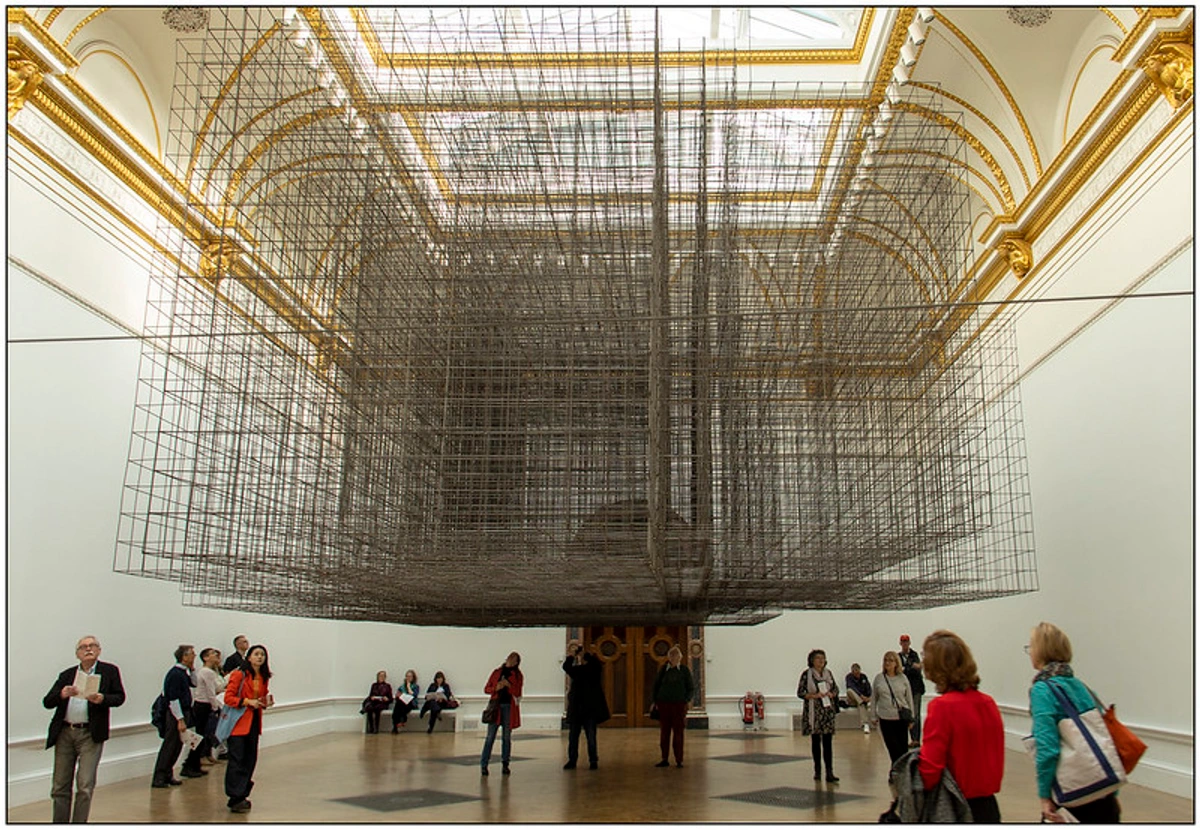
- Matthew Barney (b. 1967, American): Barney is known for his ambitious, complex, and often visually overwhelming multimedia projects, most famously the "CREMASTER Cycle," a series of five feature-length films (titled "CREMASTER 1" through "CREMASTER 5") accompanied by related sculptures, photographs, and drawings. His work blends mythology, biology, sexuality, history, and autobiography into elaborate, often hermetic narratives filled with fantastical characters and elaborate production design. It's demanding work, but undeniably epic in scope. Trying to unravel the layers in his work feels like navigating a strange, fascinating dream, dense with symbolism and personal mythology, pushing the boundaries of narrative and form.
- Olafur Eliasson (b. 1967, Danish-Icelandic): Eliasson creates immersive installations and sculptures that often use natural elements – light, water, fog, temperature, mirrors – to make viewers acutely aware of their own perception, presence, and interaction with the surrounding space (like the stunning, sun-like "The Weather Project" at Tate Modern or his "Ice Watch" bringing glacial ice to city centers). His work encourages a conscious engagement with our environment and the act of seeing itself. His installations don't just show you something; they make you feel something about the world around you and your place within it, highlighting our connection to the natural world and each other.
- Urs Fischer (b. 1973, Swiss): Fischer brings a playful, often disruptive, and materially inventive energy to sculpture and installation. He uses unconventional materials and processes – like giant wax candle sculptures designed to melt away during an exhibition (a brilliant commentary on impermanence!), or excavating a gallery floor ("You" at Gavin Brown's Enterprise), or creating sculptures from "Clay" that visitors can reshape – to explore themes of transformation, perception, the absurd, and the nature of art objects. There's a certain delightful chaos to his approach. The melting wax sculptures are such a simple, yet profound, idea about time and change, and the Clay pieces invite a kind of playful interaction that breaks down traditional art barriers, questioning the fixed nature of art itself.
- Mona Hatoum (b. 1952, Palestinian/British): Born in Beirut to Palestinian parents, Hatoum's often minimalist but psychologically charged sculptures and installations frequently use familiar domestic objects (kitchen utensils, furniture, maps) transformed into threatening or uncanny forms. Works like "Homebound" (furniture strung with electric wires) or "Light Sentence" (lockers casting grid-like shadows) explore themes of displacement, confinement, surveillance, power, and the precariousness of home and identity, resonating powerfully with experiences of exile and political instability in the Middle East and beyond. Winner of the Praemium Imperiale for Sculpture in 2019. Her work takes everyday objects and makes them feel deeply unsettling, reflecting a sense of unease that many can relate to, especially in a world marked by conflict and migration, giving form to the anxieties of displacement.
- Sheila Hicks (b. 1934, American): A pioneering figure in contemporary textile art, Hicks has spent decades elevating fiber into monumental, architecturally integrated installations and vibrant, tactile sculptures. Working globally, often drawing inspiration from indigenous weaving traditions in Latin America and elsewhere, she uses color, texture, and scale to create breathtaking environments and objects, blurring the lines between art, craft, and design. Her "Pillar of Inquiry/Supple Column" or her vibrant "Baoli" series are fantastic examples. Her work completely changed how I think about textiles as an art form, showing their potential for monumental scale and profound expression, celebrating the richness and versatility of fiber.
- Anish Kapoor (b. 1954, British-Indian): Kapoor creates mesmerizing abstract sculptures that often play tricks on our perception through impossibly reflective surfaces (like Chicago's beloved "Cloud Gate" or "The Bean"), deep voids ("Descension"), or intense, void-like color (he controversially secured exclusive artistic rights to Vantablack pigment). His large-scale commissions, like "Marsyas" in Tate Modern's Turbine Hall, explore primal themes of form, emptiness, presence, absence, and the sublime. He also has a dedicated Anish Kapoor Foundation. Awarded the Turner Prize (1991) and the Praemium Imperiale (2011). Standing under the "Bean" in Chicago feels like being inside a giant, distorted mirror – it's a simple idea with a huge impact, making you question what's real and what's reflection, playing with perception on a grand scale.
- KAWS (Brian Donnelly, b. 1974, American): KAWS fluidly moves between the worlds of street art, fine art, design, and collectible culture. His signature "Companion" figure (a skull-headed character with X-ed out eyes, often referencing Mickey Mouse) appears in paintings, highly sought-after vinyl toys, and massive public sculptures (like "KAWS:HOLIDAY" installations across the globe), blurring the lines between high art, popular appeal, and branding. His work is everywhere, and it's fascinating how he's built a global brand out of a simple character, demonstrating the power of iconography in contemporary culture and challenging traditional art hierarchies.
- Jeff Koons (b. 1955, American): Famous (and sometimes infamous) for his super-polished, often enormous sculptures like his "Balloon Dog" series (influenced by Pop Art and Minimalism in its embrace of everyday objects and industrial finishes), pop culture icons ("Michael Jackson and Bubbles", Popeye), and mundane objects elevated to high art status ("Rabbit"). Koons relentlessly plays with ideas of consumerism, taste, celebrity, kitsch, and desire, sparking endless debate about art, value, and sincerity in the contemporary market. He's a master of spectacle and knows how to push buttons. His retrospective at the Whitney Museum in 2014 was a blockbuster event. You can't ignore Koons, even if his work makes you question what art is supposed to be and who gets to decide – he holds a mirror up to consumer culture and celebrity obsession.
- Simone Leigh (b. 1967, American): Leigh's powerful sculptures, often referencing African art history, diasporic traditions, vernacular architecture (like her monumental "Brick House" on the High Line), and Black feminist theory, center Black female subjectivity with grace and monumentality. Her commanding works, often in bronze or ceramic, explore themes of resilience, labor, community, and representation, earning her the prestigious Golden Lion at the 2022 Venice Biennale for her presentation in the main exhibition, a truly landmark achievement. She also won the Hugo Boss Prize in 2018. Her sculptures have such a powerful, quiet strength, asserting presence and history in a way that feels both ancient and utterly contemporary, giving monumental form to Black female experience.
- Wangechi Mutu (b. 1972, Kenyan-American): Mutu creates fantastical, hybrid figures in collage, sculpture, video, and performance that draw on African mythology, science fiction, fashion, and politics. Her work, often described as Afrofuturist (a cultural aesthetic combining sci-fi, history, and fantasy to explore the African diaspora experience and future – also seen in music like Sun Ra or literature by Octavia Butler), explores themes of gender, race, colonialism, environmental destruction, and the complexities of identity through visually stunning and often unsettling imagery. She frequently uses materials like magazine cutouts, glitter, and organic elements to build her powerful figures, like those in her "The NewOnes, will free Us" commission for the Met facade. Her hybrid figures are both beautiful and challenging, like something out of a futuristic myth, pushing the boundaries of identity and representation in a globalized world.
- Bruce Nauman (b. 1941, American): A hugely influential figure whose diverse practice spans sculpture, performance, video, drawing, and neon. Nauman's work often explores the body, language, control, and the artist's studio as a space of both labor and confinement. His early performance pieces and body-oriented sculptures were groundbreaking, and his later neon works and video installations continue to challenge viewers intellectually and physically. Awarded the Golden Lion at the 48th Venice Biennale (1999) and the Wolf Prize in Arts (1993). His work often feels like a puzzle you have to solve with your whole body and mind, making you acutely aware of your own physical and mental presence and the constraints placed upon them.
- Cady Noland (b. 1956, American): Known for her provocative sculptures and installations that dissect American culture, violence, celebrity, and the mythology of the frontier. Using materials like aluminum, chain-link fences, and found objects related to crime or Americana (like her "Oozewald" series or installations featuring "stockades"), Noland's work is sharp, critical, and often unsettling, engaging directly with themes of Institutional Critique and the dark underbelly of the American Dream. Her work makes you look at familiar objects and symbols in a completely different, often uncomfortable, light, revealing the violence and contradictions beneath the surface of national identity.
- Gabriel Orozco (b. 1962, Mexican): A key figure from Latin America, Orozco works across sculpture, photography, drawing, and installation with a poetic and often playful conceptual approach. He finds beauty and meaning in everyday objects and chance encounters, transforming mundane materials (like a Schwalbe tire print on paper or a Citroën DS cut lengthwise and reassembled as "La DS") into thought-provoking meditations on movement, circulation, geometry, and the relationship between art and life. His major mid-career survey starting at MoMA in 2009 highlighted his global influence. His ability to find art in the everyday is something I find really inspiring; it encourages you to look at the world around you with fresh eyes, revealing the poetry in the mundane.
- Doris Salcedo (b. 1958, Colombian): Another major voice from Latin America, Salcedo creates deeply moving sculptures and installations that grapple with trauma, loss, and political violence, particularly within the context of Colombia's history. Using ordinary materials like furniture filled with concrete ("Unland" series), repaired domestic objects, or cracked gallery floors ("Shibboleth" at Tate Modern), she gives form to grief, memory, and the enduring presence of absence. Her work is profoundly poetic and politically resonant. Awarded the Praemium Imperiale (2018) and the inaugural Nasher Prize for Sculpture (2016). Her ability to make absence feel so present is incredibly powerful, giving weight and form to the invisible scars of history and collective trauma.
- Kara Walker (b. 1969, American): Best known for her provocative, room-sized cut-paper silhouettes depicting disturbing and fantastical scenes addressing race, gender, sexuality, and violence throughout American history, particularly slavery and the antebellum South. Walker also creates powerful, large-scale sculptures and installations (like the monumental sugar sphinx "A Subtlety, or the Marvelous Sugar Baby..." at the Domino Sugar Factory or "Fons Americanus" at Tate Modern) that confront these difficult themes with unflinching directness and dark humor. Her drawing informs all her work. A MacArthur Fellow (1997). Her work is uncomfortable, yes, but it forces you to confront difficult histories head-on, using beauty and horror to tell uncomfortable truths and challenge historical narratives.
- Rachel Whiteread (b. 1963, British): A key figure of the YBAs, Whiteread makes the invisible visible by casting the negative space inside or around objects – from humble hot water bottles and mattresses ("Ghost") to entire rooms or even a whole terraced house ("House", which won her the Turner Prize in 1993, making her the first woman to do so). Her ghostly, minimalist sculptures, often using materials like plaster, resin, or concrete, explore memory, absence, domesticity, the passage of time, and the imprint of human presence. It's a simple concept executed with profound results. Casting the space under a chair? It sounds so simple, but the result is hauntingly beautiful, making you think about the spaces we inhabit and the traces we leave behind, giving solid form to emptiness.
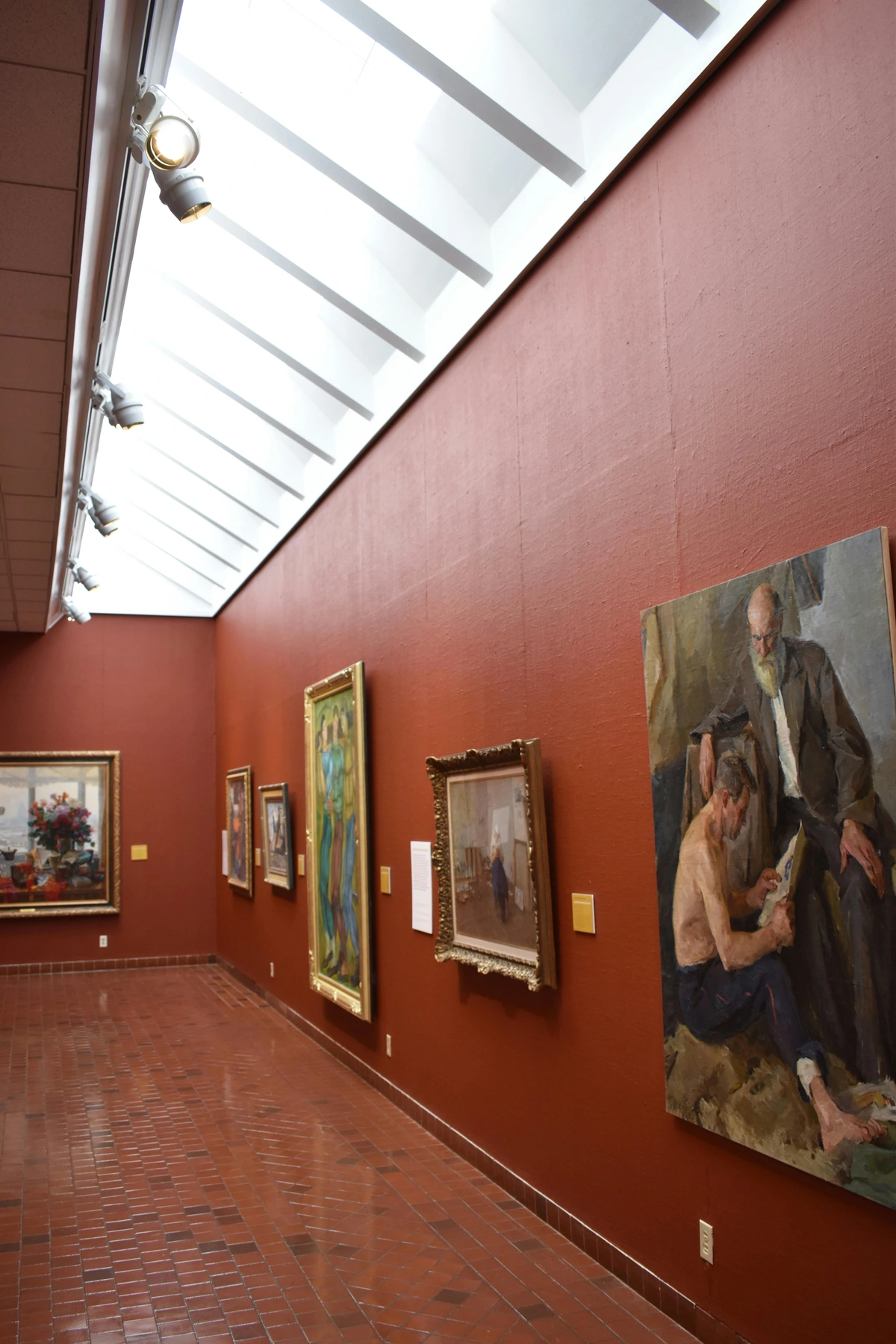
Expanding the Horizon: More Voices Shaping Three Dimensions
It's easy to get tunnel vision focusing only on the biggest names. But the world of sculpture and installation is incredibly rich, with artists using diverse materials and approaches to speak to contemporary life. Let's acknowledge a few more vital contributors among famous artists alive who push the boundaries of form and material:
- Craft-Based Innovations: The line between "craft" and "fine art" has thankfully become increasingly blurred. Artists like Grayson Perry (b. 1960, British), known for his highly decorated, often subversive ceramic vases (like his "Moral Maze" series) and tapestries exploring identity, gender, and social class (and a Turner Prize winner, 2003), and Edmund de Waal (b. 1964, British), celebrated for his minimalist arrangements of porcelain vessels often displayed in vitrines (famously chronicled in his memoir "The Hare with Amber Eyes"), bring extraordinary skill and conceptual depth to traditional craft media. Their work reminds us that material mastery can carry profound meaning. Perry's vases are like Trojan horses – beautiful objects hiding sharp social commentary, while de Waal's installations speak volumes through quiet arrangement and history, elevating craft to conceptual art.
- Engaging the Land: While the heyday of monumental Land Art was in the 60s and 70s, contemporary artists continue to engage with the environment in powerful ways. Figures like Andy Goldsworthy (b. 1956, British) create ephemeral sculptures using natural materials like leaves, stones, and ice, documented through stunning photography, exploring time, decay, and the beauty of natural processes. His work connects us back to the earth in a very direct, often quiet way. Seeing his ice sculptures melt feels like watching time itself, a poignant reminder of impermanence and nature's cycles.
- More Global Perspectives: Pushing beyond established centers, artists like Pascale Marthine Tayou (b. 1966, Cameroonian) create vibrant, mixed-media installations using found objects and exploring themes of identity, migration, and global exchange. From Southeast Asia, Rirkrit Tiravanija (b. 1961, Thai, Argentinian-born) is a key figure in Relational Aesthetics, known for works that often involve cooking and sharing meals within gallery spaces, fostering social interaction as the artwork itself (his famous piece is "Pad Thai"). These artists, among many others, bring crucial perspectives enriching the global dialogue. Tiravanija's work makes you question what art is – is it the object, or the experience of sharing a meal? It challenges traditional notions of ownership and value by focusing on human connection.
A Note on Indigenous Voices: While this list focuses broadly, it's crucial to acknowledge the growing influence of contemporary Indigenous artists globally, who often blend traditional techniques and cosmologies with contemporary concerns. Artists like Kent Monkman (Cree, Canada) with his reinterpretations of history painting, Tracey Moffatt (Aboriginal Australian) with her powerful photography and film, or Jeffrey Gibson (Choctaw/Cherokee, USA) with his vibrant beaded works, are essential figures challenging narratives and enriching the contemporary art landscape. Their work is vital for expanding the art historical conversation and offering perspectives often marginalized in the past.
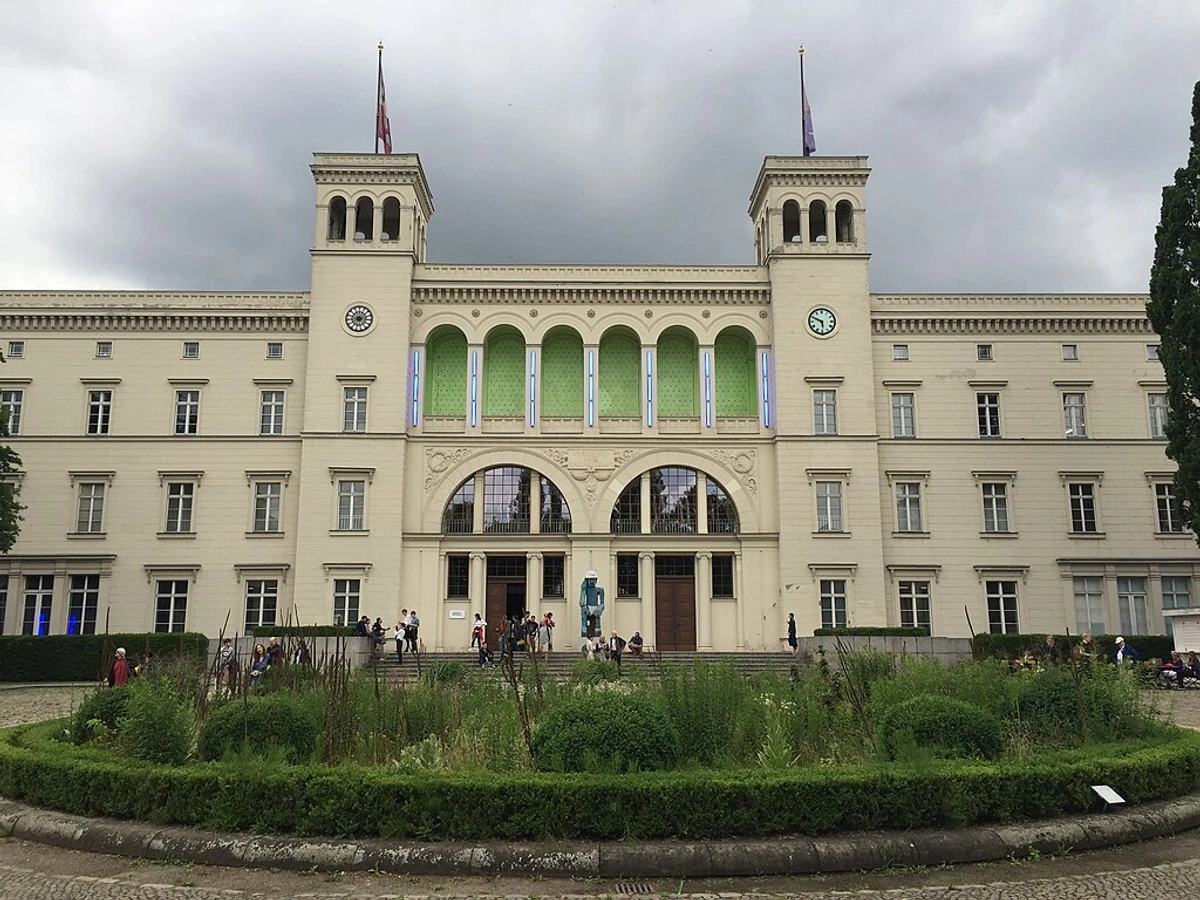
Photography, Film & Digital Media Artists: Through the Lens and Screen
These contemporary artists today harness technology – from traditional photography to cutting-edge digital tools – to capture, critique, manipulate, and create realities, pushing the boundaries of lens-based media. This category is also home to pioneers in Video Art, Sound Art, AI Art, NFTs, and even BioArt. It's a space that feels like it's constantly reinventing itself, which is both exciting and a little dizzying.
- Refik Anadol (b. 1985, Turkish-American): A pioneer working at the intersection of art, data science, and artificial intelligence. Anadol creates mesmerizing, large-scale data sculptures and immersive installations (like "Machine Hallucination" series or his recent work at MoMA visualizing the museum's collection data) that visualize vast datasets – from brain activity to urban flows – as dynamic, fluid digital paintings. His work explores the aesthetics of data and the possibilities of machine intelligence as an artistic medium, pushing into the realm of AI Art and Generative Art. His work makes data feel beautiful and alive, which is a strange and wonderful thing, like seeing the hidden patterns of the universe, revealing the unseen poetry of information.
- Cao Fei (b. 1978, Chinese): A leading voice exploring the impact of rapid economic and technological change on Chinese society. Her work spans video, digital media, photography, and installation, often using virtual worlds (like Second Life in her "RMB City" project), avatars, and documentary approaches to examine themes of globalization, urbanization, labor, youth culture, and the blurring lines between reality and the virtual ("Asia One"). She captures the surreal juxtapositions of contemporary life. Her use of virtual worlds feels incredibly relevant to how we live now, where online and offline realities are increasingly intertwined, reflecting the complexities of modern identity in a digital age.
- Andreas Gursky (b. 1955, German): Gursky is the master of the monumental photograph. Think vast, hyper-detailed, often digitally manipulated images of things like stock exchanges ("Chicago Board of Trade III"), rave parties, Amazon warehouses ("Amazon"), or seemingly endless supermarket aisles ("99 Cent II Diptychon"). A key figure associated with the Düsseldorf School of Photography (alongside Candida Höfer, Thomas Struth, and Thomas Ruff, trained by the highly influential Bernd and Hilla Becher), his work often adopts an almost god-like, detached viewpoint, revealing the overwhelming scale and intricate patterns of globalization, consumerism, and modern systems. Standing in front of one feels less like looking at a photo and more like being absorbed by a dizzying, almost abstract reality, capturing the sublime scale of contemporary life. His work is a must-see in major museums for modern art.
- JR (b. 1983, French - anonymous): This anonymous French photographer and street artist creates massive black-and-white photographic portraits of ordinary, often marginalized, people and pastes them onto buildings, trains, favela walls, and contested borders worldwide (like his "Face 2 Face" project in Israel/Palestine or "Women Are Heroes"). His global participatory "Inside Out Project" and other large-scale interventions aim to give visibility, dignity, and a human face to communities, using public space as his canvas and challenging perceptions. His work is art as a global conversation, giving a voice to those often unseen, transforming public spaces into temporary galleries of human stories and fostering connection across borders.
- William Kentridge (b. 1955, South African): A versatile master whose profound work spans charcoal drawings, unique stop-motion animated films (created through a painstaking process of drawing, erasing, and redrawing, seen in his "Drawings for Projection" series featuring Soho Eckstein), prints, tapestries, sculpture, and even opera productions ("The Nose"). Kentridge frequently engages with the painful history, politics, and enduring legacies of apartheid, colonialism, and memory in South Africa, often using a distinctive, process-based visual language. Awarded the Praemium Imperiale (2019) and the Kyoto Prize (2010). His drawing process itself is central (see Focus on Drawing below). Watching his animations feels like seeing thoughts form and dissolve on the page, a visual metaphor for the constant negotiation with history and memory, revealing the layers of the past. For more, see our ultimate guide to William Kentridge.
- Barbara Kruger (b. 1945, American): Instantly recognizable for her bold, graphic works layering declarative text (often personal pronouns like "I," "You," "We," "They" in white Futura Bold Oblique font against a red background) over found black-and-white photographs (like "Untitled (Your body is a battleground)" or "I shop therefore I am"). Kruger's powerful conceptual art delivers sharp, witty critiques of consumerism, power structures, misogyny, and the persuasive language of mass media, a form of Institutional Critique aimed at cultural systems. Associated with the Pictures Generation, she received the Golden Lion for Lifetime Achievement at the 2005 Venice Biennale. Her work hits you like a punchy slogan, but stays with you much longer, making you question the messages you're bombarded with every day and revealing the power dynamics embedded in visual culture.
- Shirin Neshat (b. 1957, Iranian-American): Neshat creates hauntingly beautiful and politically potent photographs and video installations exploring complex themes of gender, identity, religion, exile, and politics, particularly in relation to Iranian and Islamic cultures, often focusing on the female experience. Her visually arresting black-and-white images, frequently incorporating meticulously inscribed Farsi calligraphy onto the subjects' skin (as seen in her "Women of Allah" series), and her powerful films like "Turbulent" (which won her the Golden Lion at the Venice Biennale in 1999) are both poetic and deeply challenging. Awarded the Praemium Imperiale in 2017. Her images are so striking, they draw you in before you even understand the complex layers of meaning, speaking to the beauty and struggle of navigating multiple cultural identities and the complexities of female experience across cultures.
- Pipilotti Rist (b. 1962, Swiss): Rist is celebrated for her lush, colorful, and often playful video installations that envelop the viewer in dreamlike environments. Her work often explores themes of the body, gender, nature, and technology with a sensuous, psychedelic aesthetic, projecting onto walls, furniture, or suspending screens in unexpected ways (like her immersive "Pixel Forest" or "Ever is Over All" where a woman walks down a street smashing car windows with a flower). She transforms video into a truly spatial and visceral experience, often considered a key practitioner of immersive Video Art. Her work is pure joy and sensory overload in the best possible way, inviting you to step into a vibrant, often utopian, vision and experience video as a physical environment.
- Cindy Sherman (b. 1954, American): A truly groundbreaking photographer celebrated for her conceptual self-portraits. Across numerous series, most famously the "Untitled Film Stills," but also her "History Portraits" and "Centerfolds," she embodies countless female archetypes drawn from movies, advertising, and art history, brilliantly critiquing representation, identity construction, and gender roles in visual culture. A central figure of the Pictures Generation, her influence on photography, feminist art, and subsequent generations of artists exploring identity (like Nikki S. Lee or Gillian Wearing) is immense and ongoing. Also a MacArthur Fellow (1995) and Praemium Imperiale laureate (2016). Sherman is a chameleon, constantly transforming herself to show us something about ourselves and the roles we play, revealing the constructed nature of identity and the power of the gaze.
- Hito Steyerl (b. 1966, German): A highly influential filmmaker, artist, and theorist whose sharp, critical, and often darkly humorous video essays and installations (like "How Not to Be Seen: A Fucking Didactic Educational .MOV File" or "Liquidity Inc.") dissect the complexities of digital culture, globalization, surveillance, artificial intelligence, the political economy of image circulation (Post-Internet Art concepts often resonate here), and how media technologies shape our perception of reality. A key voice among contemporary artists of today grappling with the implications of our hyper-mediated world. Her theoretical writings, such as essays in "Duty Free Art," are widely read and debated. Her video essays are dense and challenging, but they feel essential for understanding the digital age we live in, like a critical guide to navigating the online deluge and the politics of images. Post-Internet Art, a term she's associated with, is slippery, but think of it as art that assumes the internet exists and influences everything – it's not about the internet, but made in a world shaped by it, often using digital aesthetics or distribution methods.
- Wolfgang Tillmans (b. 1968, German): Tillmans approaches photography with remarkable breadth and sensitivity. His diverse body of work encompasses intimate portraits, candid snapshots of youth culture and nightlife, evocative still lifes, abstract images made without a camera ("Freischwimmer" series), and large-scale installations that explore the very nature of photographic seeing, circulation, and display in contemporary life. He won the prestigious Turner Prize in 2000, joining other winners like Rachel Whiteread and Helen Marten. Also awarded the Hasselblad Award (2015). His work feels incredibly human and observant, capturing moments and textures with a unique eye, elevating the everyday to something profound and questioning the boundaries of the photographic medium.
Expanding the Sonic and Digital Canvas
Beyond the screen and the print, artists are pushing into less tangible, yet equally powerful, territories:
- Soundscapes and Sonic Experiences: While Susan Philipsz (Turner Prize winner known for evocative sound installations in public spaces, like her piece under a bridge in Glasgow) is a key figure, the field of Sound Art includes other influential practitioners. Janet Cardiff (b. 1957, Canadian) and George Bures Miller (b. 1960, Canadian) are renowned for their immersive audio walks and installations that blend sound, narrative, and physical space, often creating unsettling or poetic experiences (like "The Forty Part Motet"). Ryoji Ikeda (b. 1966, Japanese) creates intense audiovisual installations using data, light, and sound at extreme frequencies, exploring the aesthetics of digital information and perception. These artists challenge us to listen as intently as we look. Sound art can be incredibly transportive, making you experience a space or a story just through listening, expanding our sensory engagement with art.
- AI, Generative Art, and the Digital Frontier: The rise of AI (Artificial Intelligence) and Generative Art (where algorithms create the work) is rapidly changing the landscape. Artists like Refik Anadol (mentioned above) are at the forefront, but others like Mario Klingemann explore the creative potential and limitations of machine learning. Platforms like Art Blocks have become significant for showcasing Generative Art by artists like Tyler Hobbs ("Fidenza" series). The whirlwind around NFTs (Non-Fungible Tokens) brought digital art to a new market, with projects like Beeple's record-breaking "Everydays: The First 5000 Days" and conceptual works by artists like Pak, or even established artists experimenting, like Damien Hirst's "The Currency". While the market is volatile, the underlying technology and artistic exploration continue, pushing questions about ownership, value, and the nature of digital art for even the most famous artists alive. It's a space that feels both full of potential and a little bit like the Wild West – exciting to watch, but maybe approach with caution. It's like the future of art is being written in code and data, challenging traditional notions of creation and ownership.
- Exploring Data and Surveillance: Artists like Trevor Paglen (b. 1974, American) use photography, data visualization, and investigative journalism to explore surveillance, data collection, and the hidden infrastructures of power. His work makes the invisible systems that shape our lives visible, often in unsettling ways, like photographing "Drone Vision" or the physical locations of "NSA Interception Sites." It's a reminder that even seemingly abstract data has real-world implications and that art can expose hidden truths.
- Simulation and Worldbuilding: Artists like Ian Cheng (b. 1984, American) create complex, evolving digital ecosystems in the form of live simulations ("Emissaries" series) that explore themes of artificial intelligence, ecology, and cognitive science. His work exists as code and unfolds in real-time, creating unpredictable digital worlds. It's like creating a digital petri dish and watching life evolve, pushing the boundaries of narrative and form in art and exploring the potential of artificial life.
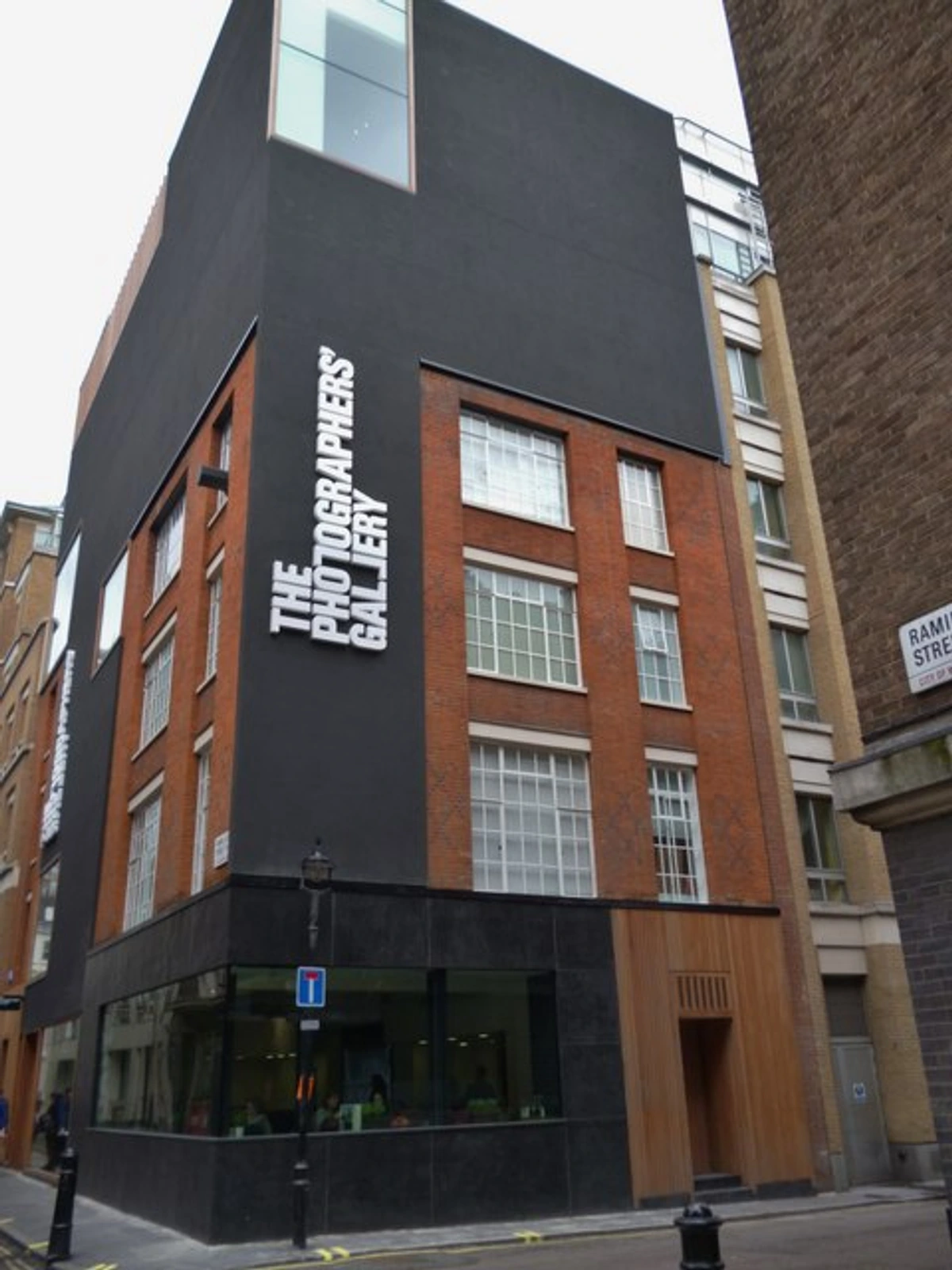
Performance, Conceptual & Social Practice Artists: Beyond the Object
For these living artists, the artwork might not be a traditional object like a painting or sculpture. Instead, it could be an idea, an action, a bodily endurance test, a relationship, a community project, or an intervention in the social fabric. Sometimes this work aligns with ideas around Relational Aesthetics, focusing on human relationships and their social context, a concept famously theorized by Nicolas Bourriaud in his influential text of the same name (1998). It's art that asks you to participate, or at least think differently about the world around you.
- Marina Abramović (b. 1946, Serbian): Often called the "grandmother of performance art," Abramović has been pushing the limits of physical and mental endurance for decades. Her seminal, often grueling performance pieces ("Rhythm 0" where she offered herself and objects to the audience, "The Lovers: The Great Wall Walk" with Ulay) explore pain, presence, time, vulnerability, and the intense, charged relationship between performer and audience (her MoMA piece "The Artist is Present" in 2010 became a cultural phenomenon). Awarded the Golden Lion for Best Artist at the 1997 Venice Biennale. Our ultimate guide to Marina Abramović explores her impact. Her performances are legendary for their intensity and the demands they place on both her and the audience; they make you acutely aware of the present moment and the connection between people, exploring the very limits of the body and mind.
- Banksy (Active since 1990s, British - anonymous): Despite (or perhaps because of) the persistent anonymity, Banksy is arguably one of the most globally famous artists today. This elusive street artist uses stencils, public interventions, installations ("Dismaland"), and attention-grabbing stunts (like the self-shredding painting "Love is in the Bin" at auction), often laced with dark humor and biting political satire, to critique society, consumerism, war, and the art establishment itself, achieving unparalleled notoriety outside the traditional gallery system. Banksy is a master of using the media and public space to make his point – his anonymity is part of the art itself, adding to the mystique and allowing the focus to remain on the message, proving that art can exist and thrive outside the white cube.
- Tracey Emin (b. 1963, British): Another prominent YBA known for her intensely personal and confessional artwork. Using a raw, immediate mix of drawing, painting, neon text ("I Want My Time With You"), embroidery, installation (most famously "My Bed", nominated for the Turner Prize in 1999), film, and sculpture, Emin explores themes of love, loss, desire, trauma, vulnerability, and autobiography with unflinching, sometimes uncomfortable, honesty, often engaging with notions of the 'Abject' (art dealing with things considered taboo or repulsive, challenging societal norms). Her work is incredibly raw and vulnerable, putting her own life out there for everyone to see, which can be both confronting and deeply relatable, revealing the power of personal narrative in art.
- Theaster Gates (b. 1973, American): Gates operates powerfully at the intersection of art, urban planning, community development, and cultural preservation. His influential social practice involves reclaiming abandoned buildings on Chicago's South Side, transforming them into vibrant cultural hubs, archives, and spaces for creation (like the iconic "Stony Island Arts Bank," which houses archives of Black culture and provides community space). He combines sculpture, installation, performance (often involving music), and craft with a deep engagement with Black culture, history, and the potential of art to enact social change, specifically addressing urban decay and disinvestment in marginalized communities. A Praemium Imperiale laureate (2018). Gates shows how art can be a tool for real-world change, not just something to look at on a wall, but a force for community building and historical preservation, demonstrating art's capacity for social impact.
- Tania Bruguera (b. 1968, Cuban): Bruguera is a key figure in political and social practice art, known for performances and installations that directly engage with power structures, censorship, and human rights, particularly in Cuba. Her work often creates situations that challenge viewers and authorities, like her "Tatlin's Whisper #6 (Havana Version)" where she offered a minute of free speech to anyone who approached the microphone, or her ongoing project "Immigrant Movement International" which functions as a community space and platform for immigrant rights. Her work is often confrontational and aims to provoke real-world action and dialogue, using art as a platform for political expression and social change.
A Special Focus: Famous Drawers Today
While countless artists draw as part of their process, some contemporary artists of today stand out for making drawing a particularly central, visible, and influential part of their recognized practice. If you're specifically searching for famous drawing artists today, these names are essential, even if they work across other media too. It reminds us that sometimes, the simplest tools yield the most profound results. Drawing is often where the idea first takes tangible form, right? Even my most complex paintings often start with a simple sketch – a quick line can capture an energy that hours of painting might obscure. For many famous painters alive today, drawing isn't just preparation; it's a parallel investigation, a way of thinking and seeing that is fundamental to their artistic identity. It's the bones beneath the skin, the initial spark before the fire.
Several artists highlighted in the sections above are also profoundly recognized for their drawing practice:
- Njideka Akunyili Crosby: Drawing is a key foundational element seamlessly integrated with painting, collage, and photo transfer in her richly layered works on paper, defining contours and adding detail. Her preparatory drawings often reveal the intricate planning behind the final works. It's like seeing the skeleton before the skin, the underlying structure that holds everything together.
- Vija Celmins: Her graphite and charcoal drawings of oceans, stars, and webs are masterclasses in observational drawing, achieving incredible detail and tonal range. They stand alone as major works, not just studies, demonstrating the power of intense focus and meticulous rendering with simple tools. Her patience with detail is truly astounding; it makes me want to slow down and really look at the world.
- Tracey Emin: Known for her immediate, often raw and emotionally charged drawings that are central to her direct, confessional style, often appearing alongside text. The line quality itself carries expressive weight, conveying vulnerability and urgency. Her drawings feel like raw emotion captured on paper, unfiltered and direct, like a visual diary entry.
- David Hockney: Especially his recent, prolific, and vibrant iPad drawings, which have brought a fresh, accessible perspective to digital drawing and observation, capturing landscapes and portraits with characteristic flair. His traditional drawings remain foundational. His iPad drawings make me want to pick up my own tablet and just start sketching, proving that drawing can evolve with technology while retaining its core immediacy.
- William Kentridge: His charcoal drawings are the very soul of his animated films, particularly the acclaimed "Drawings for Projection" series; the visible process of drawing, erasing, and redrawing is integral to his storytelling about history and memory. The drawings are the film, a testament to the power of process and the hand. It's fascinating how the act of drawing and erasing becomes part of the narrative, a visual metaphor for the way history is constantly being written and rewritten.
- Julie Mehretu: The dizzying complexity in her large paintings often originates from intricate architectural drawings and layers of energetic, calligraphic line work that build density and narrative. Her drawings are works of art in their own right, showcasing the skeleton of her larger compositions. Her lines feel like they're mapping invisible forces, the energy and chaos of the modern world captured through drawing.
- Yoshitomo Nara: While also a painter and sculptor, Nara's distinctive drawings – often quick sketches featuring his iconic characters on envelopes, flyers, or found objects – possess a unique intimacy and immediacy, revealing the emotional core of his work. They feel like diary entries from a world both familiar and strange. His quick sketches often capture more feeling than a finished piece, demonstrating the power of spontaneity and directness in drawing.
- Raymond Pettibon: Pettibon is a drawing powerhouse. His signature style relies on bold, fluid brush-and-ink drawings, usually paired with cryptic or provocative handwritten text. Think of his iconic Black Flag four-bar logo or his recurring motifs of surfers riding giant waves. It's a direct descendant of comic book art and punk flyers, but elevated (or maybe dragged sideways?) into the realm of high art. His influence on graphic styles and artists who combine image and text is huge. You can almost feel the speed and confidence in his lines. His drawings are like visual poems, raw and impactful, a unique fusion of image and language.
- Elizabeth Peyton: Her distinctive, fluid portraits exist as both paintings and highly regarded drawings or works on paper (like watercolors or monotypes), often capturing a similar intimacy and immediacy. Her drawn portraits have a delicate, fleeting quality, capturing the essence of a person with minimal means.
- Kara Walker: Although famed for silhouettes, drawing underpins her explorations of history, race, and identity across all media, visible in preparatory sketches and related works on paper that reveal her hand and thought process before translating ideas into silhouettes or sculpture. Her drawings are the foundation for her powerful, sharp-edged narratives, showing the thought process behind her impactful installations.
This isn't exhaustive – many great painters and sculptors maintain vital drawing practices. But it highlights artists where drawing is arguably fundamental to their public recognition and impact among famous living artists. It's a reminder that even in our high-tech world, the simple act of drawing remains a powerful artistic force. Discovering these artists might inspire you to explore your own line work, or even check out master sketch artists today.
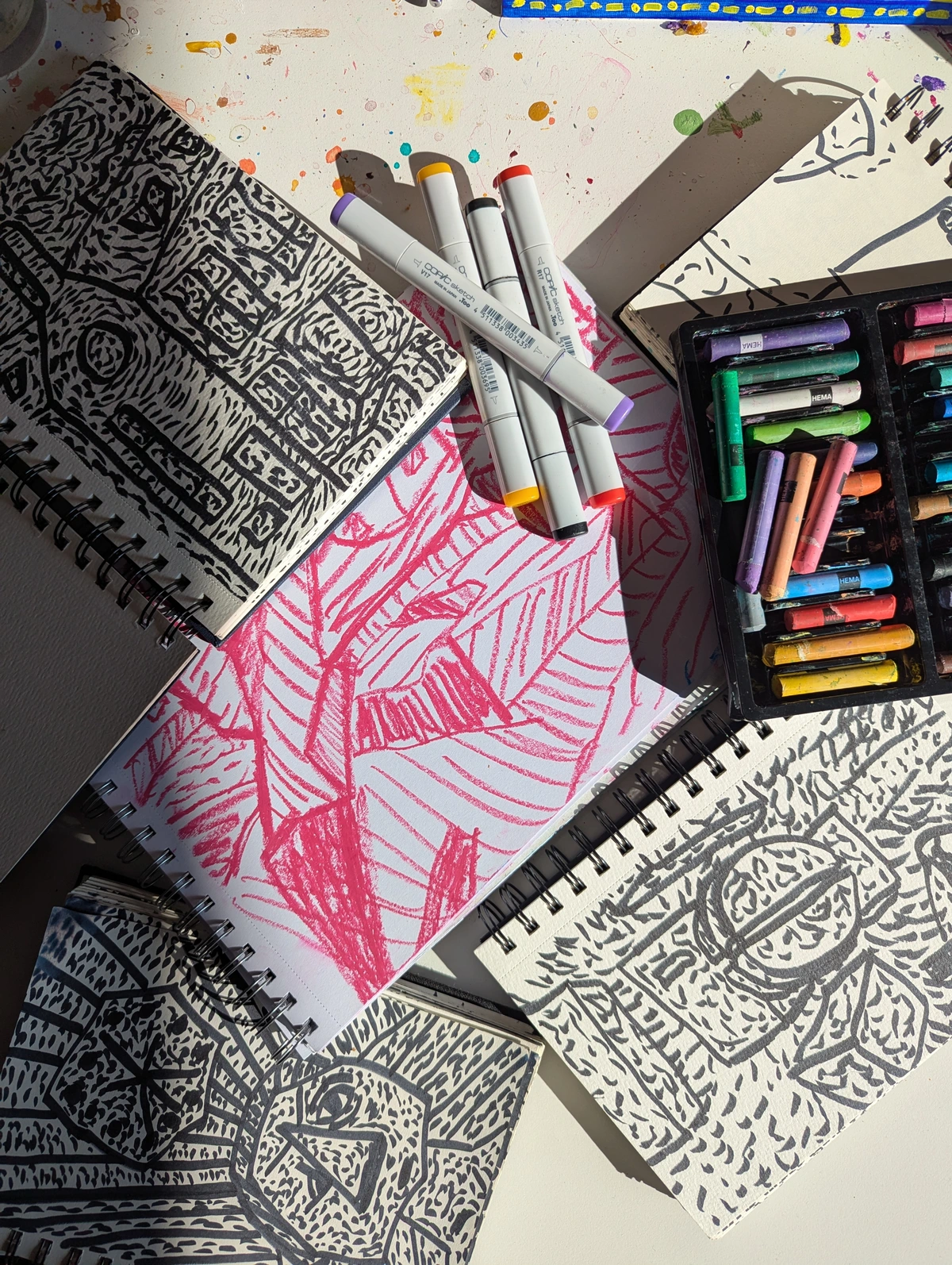
Pushing Printmaking: It's also worth noting artists who significantly push contemporary Printmaking. While many on this list utilize print techniques (like Wool or Akunyili Crosby), figures like Kiki Smith (b. 1954, American/German) stand out for making printmaking (etching, lithography, screenprinting) a central and innovative part of their practice, often exploring the body and nature with visceral detail. Printmaking can feel like a collaboration between the artist and the process itself, yielding results that are both controlled and unpredictable, adding another layer to their artistic voice.
The Ever-Shifting Sands: What's Happening in Contemporary Art Now?
The world of contemporary art is anything but static; it's a constantly evolving landscape. Trying to define the "top contemporary artists" or "most important contemporary artists" is inherently tricky because new forces, ideas, and talents are always emerging. It keeps you on your toes, doesn't it? Just when you think you've got a handle on things, something new pops up. Here are a few currents shaping the scene:
- New Media Frontiers (Beyond the Canvas): Artists wielding digital tools, video, AI, augmented and virtual reality, blockchain/NFTs, and the internet itself are constantly pushing the definitions of what art can be, how it's made, where it's experienced, and how it's owned and collected. We're seeing fascinating developments in specific sub-genres like Generative Art (where algorithms create the work, seen prominently on platforms like Art Blocks), AI Art (using machine learning, explored by artists like Mario Klingemann or Refik Anadol), BioArt (using living matter like bacteria or tissue, pioneered by artists like Eduardo Kac), and Net Art (existing primarily online, with early pioneers like Olia Lialina still relevant). The impact of NFTs, while volatile, saw projects like Beeple's record-breaking "Everydays: The First 5000 Days" and Pak's conceptual works grab headlines, alongside collaborations like FKA twigs' "meta angel" NFT pushing boundaries. This is a rapidly changing space, often linked to Post-Internet Art discussions – a somewhat slippery term, but generally referring to art made after the internet became ubiquitous, reflecting its influence on aesthetics, production, and distribution (think Hito Steyerl or Ian Cheng with his fascinating simulations). It feels like the possibilities are endless, and maybe a little overwhelming, but definitely exciting. It's like the digital realm has become a whole new continent for artists to explore.
- The Experience Economy & Social Turn: Performance art, social practice projects (like those by Theaster Gates or Tania Bruguera), immersive installations (think Eliasson, Kusama, Pipilotti Rist, or the collective Meow Wolf), and ephemeral works that prioritize experience, participation, process, and community engagement over the creation of permanent, sellable objects continue to gain prominence. Ideas around Relational Aesthetics, focusing on human interactions as the artwork's site (as articulated by critic Nicolas Bourriaud), remain influential. How do we value art that disappears, exists in relationships, or aims for social impact? It challenges traditional collecting models, that's for sure. Art that you do or experience rather than just look at feels like a natural fit for our current world, where experiences often feel more valuable than possessions. Think of Felix Gonzalez-Torres's candy piles or paper stacks that visitors are invited to take, or Santiago Sierra's controversial performances involving marginalized groups.
- Expanding Global Perspectives: The art world is (gradually, perhaps too gradually?) becoming less overwhelmingly dominated by traditional Western centers like New York, London, or Paris. Artists from Asia (explore the Best Art Cities: Asia), Africa (like Ibrahim Mahama from Ghana or Zanele Muholi from South Africa), Latin America (with giants like Orozco, Salcedo, and influential figures like Beatriz Milhazes from Brazil), the Middle East (consider Hatoum's impact, or artists like Walid Raad from Lebanon), Eastern Europe (like Paulina Olowska from Poland), and Indigenous communities worldwide are gaining deserved international recognition, bringing vital perspectives, histories, and aesthetics to the global stage. Major hubs are emerging or solidifying their importance, like Los Angeles (with its own vibrant gallery scene, including spaces like Blum & Poe, and institutional weight), Beijing (check out Long March Space), São Paulo, Lagos, Seoul, and Mexico City, each fostering unique artistic ecosystems. Checking out the best art cities in Europe or the best art cities in the US still reveals major centers, but the map is undeniably broadening and becoming more interconnected. It's about time the conversation became truly global, reflecting the diverse world we actually live in.
- Street Art's Continued Ascent: Once relegated to the fringes or vandalism, street art and graffiti aesthetics have stormed into the mainstream, profoundly influencing popular culture, fashion, design, galleries, and the art market itself, blurring lines between public intervention, activism, and fine art. Figures like Banksy and JR exemplify this crossover appeal, but also consider artists like Shepard Fairey or the late Jean-Michel Basquiat (whose legacy continues to influence). Street art feels like the pulse of the city, raw and immediate, a constant reminder that art isn't confined to white cubes.
- Dominance of Art Fairs: Mega-events like Art Basel (in Basel, Miami Beach, and Hong Kong), Frieze (in London, New York, Los Angeles, and Seoul), TEFAF (Maastricht and New York), and numerous important regional fairs like The Armory Show (New York) or Expo Chicago have become crucial marketplaces, networking hubs, and trendsetting platforms, significantly shaping artists' careers and market trajectories. Navigating them requires strategy, especially if you're considering buying (see these handy tips for visiting art fairs). They're intense, overwhelming, but undeniably where a lot of the action happens. Art fairs are like a condensed version of the art world – exciting, exhausting, and full of possibilities, a place where art meets commerce head-on.
- Shifting Styles & 'Isms' (or lack thereof): Defining broad "movements" today is harder than in the modern era, but certain tendencies emerge and fade. The New Leipzig School (featuring painters like Neo Rauch and Matthias Weischer) brought renewed attention to figurative painting with surreal undertones from Germany. The Pictures Generation (active since the late 70s/80s, but key figures like Sherman, Kruger, and Richard Prince remain highly influential) continues to resonate with its critique of media and representation. Zombie Formalism was a term (often critical) applied to a wave of process-based abstract painting in the early 2010s that seemed to revive older forms without the original critical bite. Afrofuturism, while rooted deeper, continues to gain traction as a visual and conceptual framework. Other emerging trends include Ecological Art (addressing environmental issues, like the work of Agnes Denes or Olafur Eliasson's ice projects), and art engaging directly with Science and Technology (beyond just AI, think of artists working with biotech or robotics). These aren't rigid categories, more like currents in the flow, reflecting a more pluralistic and less dogmatic contemporary art scene compared to historical 'isms'. It feels like artists today are more focused on individual exploration rather than signing up for a group manifesto, which, honestly, makes things more interesting, if harder to neatly label! It's a glorious, messy, unpredictable landscape, and that's part of its charm.
Emerging Artists to Watch: The Next Wave Shaping the Conversation
While the artists listed above have cemented their place, the contemporary art world is constantly refreshed by new voices gaining significant traction. Keeping an eye on these artists is key to understanding where art is heading right now. Here are a few examples of artists who have been making waves and are definitely worth watching:
- Jadé Fadojutimi (b. 1993, British): Known for her vibrant, large-scale abstract paintings that explore identity, emotion, and environment through energetic brushwork and complex color palettes. Her work has quickly gained international attention and critical acclaim, positioning her as a leading voice in contemporary abstraction.
- Amoako Boafo (b. 1984, Ghanaian): Celebrated for his striking portraits of Black subjects, often using finger painting techniques to render skin tones with incredible texture and depth. His work challenges traditional portraiture and has achieved rapid market success and institutional recognition, bringing a fresh perspective to figurative painting.
- Lauren Halsey (b. 1987, American): An artist from South Central LA whose work spans sculpture, installation, and community-based projects. Her large-scale installations, often referencing vernacular architecture and Black cultural spaces, create immersive environments that celebrate community, history, and Black imagination, earning her significant accolades like the Hugo Boss Prize.
- Jenna Gribbon (b. 1987, American): Known for her intimate, often voyeuristic paintings that explore themes of desire, the female gaze, and domestic life, frequently depicting her partner. Her distinctive style blends figuration with moments of abstraction, gaining a strong following for its psychological depth and contemporary sensibility.
- Titus Kaphar (b. 1976, American): While perhaps slightly more established than the others on this mini-list, Kaphar continues to be a vital force. His work, often involving physically altering or deconstructing historical paintings (cutting, tearing, dipping in tar) or creating new works that mimic historical styles, directly confronts the legacies of slavery and racial injustice in American art history and society. His interventions are powerful acts of historical revision and critique.
This is just a tiny glimpse, of course. The world is full of incredible artists pushing boundaries. Discovering them often means looking beyond the biggest headlines and exploring galleries, artist-run spaces, and exhibitions focused on emerging talent.
Quick Reference: Selected Famous Living Artists
Here’s a table summarizing some of the key artists alive today discussed above. Remember, this is highly selective and focuses on figures with significant global recognition and influence, particularly within Western art institutions and markets, while acknowledging the vital contributions from other regions. Think of it as a launchpad for your own exploration! We've added a couple more names based on our discussion to broaden the picture.
Artist | Primary Medium(s) | Key Themes / Style / Series / Concepts | Nationality (Born) | Known For Being a... | Notable Drawer? | Why Famous/Influential? Key Awards/Shows |
|---|---|---|---|---|---|---|
| David Hockney | Painting, Drawing, Photography, Digital Art | Pop Art, Landscape ("A Bigger Splash"), Portraiture, Perspective, iPad Drawings | British | Painter, Drawer | Yes | Pop Art icon, vibrant style, tech innovation (iPad), huge popularity. Major Tate/Pompidou/Met Retrospective (2017). |
| Yayoi Kusama | Installation Art ("Infinity Mirror Rooms"), Sculpture, Painting | Polka Dots, Infinity Nets, Obsession, Psychedelia, Immersive Experience | Japanese | Installation Artist, Painter | No | Global phenomenon ("Infinity Rooms"), unique style, major shows, longevity. Praemium Imperiale (2006). |
| Jeff Koons | Sculpture ("Balloon Dog", "Rabbit"), Installation | Pop Culture, Consumerism, Kitsch, Scale, Banality, Perfectionism | American | Sculptor | No | Record prices, controversial "kitsch" aesthetic, spectacle. Whitney Retrospective (2014). |
| Ai Weiwei | Conceptual Art, Sculpture ("Sunflower Seeds"), Film, Activism | Politics, Human Rights, Activism, Culture Clash, Institutional Critique | Chinese | Conceptual Artist, Activist | No | Outspoken activism, politically charged works, global influence. Amnesty Int. Award (2015). |
| Cindy Sherman | Photography ("Untitled Film Stills", "History Portraits") | Identity, Gender Roles, Representation, Self-Portraiture (Pictures Generation) | American | Photographer | No | Groundbreaking conceptual self-portraits, feminist art influence. MacArthur Fellow (1995), Praemium Imperiale (2016). |
| Gerhard Richter | Painting (Photorealism: "Candle", "Baader-Meinhof"; Abstract: "Abstrakte Bilder") | Memory, Perception, Photography vs Painting (Buchloh criticism) | German | Painter | No | Critical reverence, technical mastery, high market value. Praemium Imperiale (1997), Wolf Prize (1994/95). |
| Kara Walker | Silhouettes, Installation ("A Subtlety...", "Fons Americanus"), Drawing | Race, Gender, Violence, History, Slavery (Antebellum South), Power Dynamics | American | Installation Artist, Drawer | Yes | Unflinching confrontation of history, unique silhouettes, powerful installations. MacArthur Fellow (1997). |
| Kehinde Wiley | Painting ("Obama Portrait", "Rumors of War") | Portraiture, Old Masters, Identity, Race, Representation, Power | American | Painter | No | Recontextualizing Old Masters, Obama portrait fame, visual impact. |
| Anselm Kiefer | Painting, Sculpture ("Margarethe", "Sulamith") | History, Myth, Memory, National Identity, Materiality (straw, lead), Spirituality | German | Painter, Sculptor | No | Monumental scale, grappling with history, symbolic materials. Praemium Imperiale (1999), Wolf Prize (1990). |
| Marina Abramović | Performance Art ("The Artist Is Present", "Rhythm 0") | Body Art, Endurance, Presence, Performer-Audience Relationship | Serbian | Performance Artist | No | Pioneering performance, endurance pieces, MoMA fame. Venice Biennale Golden Lion (Artist, 1997). |
| Banksy | Street Art, Stencils, Installation ("Dismaland", "Love is in the Bin") | Politics, Satire, Consumerism, Social Commentary, Anonymity, Humor | British (Presumed) | Street Artist | No | Global fame via anonymous street art, political satire, stunts. |
| Takashi Murakami | Painting, Sculpture, Installation, Fashion (Louis Vuitton) | Superflat (theory/style), Pop Culture, Anime/Manga (Mr. DOB), Consumerism | Japanese | Painter, Sculptor | No | Creator of "Superflat", blending high/low art, brand collaborations. |
| Damien Hirst | Sculpture ("Shark"), Installation ("Diamond Skull"), Painting ("Spot Paintings") | YBAs, Life, Death, Science, Art Market, Spectacle, Belief | British | Conceptual Artist, Sculptor | No | YBA leader, controversial themes, massive market success. Turner Prize (1995). |
| Anish Kapoor | Sculpture ("Cloud Gate", "Marsyas"), Installation | Abstraction, Scale, Form, Void, Reflection, Pigment (Vantablack) | British-Indian | Sculptor | No | Iconic public sculptures ("Bean"), exploring voids/reflection. Turner Prize (1991), Praemium Imperiale (2011). |
| William Kentridge | Drawing ("Drawings for Projection"), Animation, Film, Printmaking | Apartheid, Colonialism, Memory, Politics, Process, History, Metamorphosis | South African | Drawer, Film Artist, Polymath | Yes | Unique charcoal animation, engaging with South African history/politics. Praemium Imperiale (2019), Kyoto Prize (2010). |
| Julie Mehretu | Painting ("Mural"), Drawing | Abstraction, Architecture, Maps, History, Migration, Urban Dynamism | Ethiopian-American | Painter, Drawer | Yes | Complex, large-scale abstractions mapping geopolitics. MacArthur Fellow (2005). |
| Tracey Emin | Neon ("I Want My Time..."), Drawing, Installation ("My Bed") | YBAs, Confessional Art, Autobiography, Vulnerability, Feminism, Emotion, Abject | British | Conceptual Artist, Drawer | Yes | Raw confessional work, YBA prominence, emotional directness. Turner Prize Nominee (1999). |
| Kerry James Marshall | Painting ("Past Times", "Garden Project") | Black Representation, History, Portraiture, Everyday Life, Challenging Canon | American | Painter | No | Portraying Black figures with complexity, correcting omissions. MacArthur Fellow (1997), "Mastry" Retrospective (2016). |
| Elizabeth Peyton | Painting, Drawing, Printmaking | Portraiture, Intimacy, Celebrity, Emotion, Fluid Brushwork, Contemporary Mood | American | Painter, Drawer | Yes | Intimate portraits, distinctive style, contemporary sensibility. |
| Peter Doig | Painting ("White Canoe") | Landscape, Figurative, Memory, Dreamlike, Color, Texture, Atmosphere | Scottish | Painter | No | Highly influential figurative painter, enigmatic landscapes, high market value. |
| Christopher Wool | Painting (Text: "SELL THE HOUSE..."), Printmaking | Text Art, Abstraction, Pattern, Process, Urbanism | American | Painter | No | Iconic text paintings, layered abstract works, conceptual rigor, market strength. Guggenheim Retrospective (2013). |
| Yoshitomo Nara | Painting, Sculpture, Drawing (on found objects) | Pop Art, Punk, Manga, Solitude, Rebellion, Innocence, Angst | Japanese | Painter, Sculptor, Drawer | Yes | Global cult following, iconic characters, unique blend of cute/angst. LACMA Retrospective (2021). |
| Andreas Gursky | Photography ("99 Cent II", "Chicago Board of Trade III") | Scale, Detail, Globalization, Consumerism, Systems (Düsseldorf School/Bechers) | German | Photographer | No | Monumental, hyper-detailed photos, high value, Becher school influence. |
| Raymond Pettibon | Drawing (ink/text - Black Flag), Painting, Zines | Ink Drawing, Text, Punk Culture, Pop Culture, Politics, Satire | American | Drawer, Painter | Yes | Distinctive ink style, image/text fusion, counter-culture influence. New Museum Retrospective (2017). |
| Faith Ringgold | Narrative Quilts ("Tar Beach"), Painting, Sculpture, Writing | African American History, Identity, Feminism, Storytelling, Social Justice | American | Quilter, Painter, Storyteller | No | Iconic narrative quilts, powerful storytelling, long career. Guggenheim Fellowship. New Museum Retrospective (2022). |
| Jenny Saville | Painting | Figurative Painting, Female Body, Corporeality, Scale, Flesh, Identity, Abject | British | Painter | No | Monumental, visceral depictions of the human form, challenging beauty standards. |
| Wangechi Mutu | Collage, Sculpture ("The NewOnes..."), Video, Performance | Afrofuturism, Hybridity, Gender, Race, Colonialism, Environment | Kenyan-American | Sculptor, Collage Artist | No | Fantastical hybrid figures, exploring complex identities. Met Facade Commission (2019). |
| Bruce Nauman | Sculpture, Performance, Video, Drawing, Neon | Body, Language, Control, Studio, Experience | American | Sculptor, Performance Artist | Yes | Pioneering conceptual/performance art, intellectual rigor. Venice Biennale Golden Lion (1999), Wolf Prize (1993). |
| Cady Noland | Sculpture, Installation | American Culture, Violence, Celebrity, Frontier, Institutional Critique | American | Sculptor, Installation Artist | No | Sharp critique of American myths, influential installations. |
| Hito Steyerl | Video Essays ("How Not to Be Seen..."), Installation, Writing | Digital Culture, Globalization, Surveillance, AI, Image Politics (Post-Internet Art) | German | Video Artist, Theorist | No | Sharp critiques of media/politics, influential theorist ("Duty Free Art"). Represented Germany Venice Biennale (2015). |
| Theaster Gates | Social Practice ("Stony Island Arts Bank"), Sculpture, Performance | Urban Renewal, Black Culture, Community, Craft, Relational Aesthetics | American | Social Practice Artist, Sculptor | No | Transforming urban spaces, community engagement, archival work. Praemium Imperiale (2018). |
| Vija Celmins | Drawing ("Night Sky"), Painting, Printmaking | Nature (Oceans, Stars, Webs), Observation, Detail, Representation, Grayscale | Latvian-American | Painter, Drawer | Yes | Meticulously detailed renderings, mastery of tone. MacArthur Fellow (1997), SFMOMA Retrospective (2018). |
| Cao Fei | Video ("Asia One"), Digital Media ("RMB City"), Photography | Virtual Worlds, Globalization, Labor, Youth Culture, China | Chinese | Multimedia Artist | No | Exploring contemporary China via technology/VR. Serpentine Galleries Exhibition (2020). |
| Refik Anadol | Data Sculpture ("Machine Hallucination"), Installation, AI Art | Data Visualization, AI Aesthetics, Immersive Environments, Technology | Turkish-American | Digital Artist, Media Architect | No | Pioneer in AI/data-driven art, stunning visual experiences. MoMA Installation (2022). |
| Doris Salcedo | Sculpture ("Unland"), Installation ("Shibboleth") | Trauma, Loss, Political Violence, Memory, Absence | Colombian | Sculptor, Installation Artist | No | Poetic work on violence/memory, prominent Latin American voice. Praemium Imperiale (2018), Nasher Prize (2016). |
| Gabriel Orozco | Sculpture ("La DS"), Photography, Drawing, Installation | Everyday Objects, Chance, Geometry, Circulation, Conceptual Playfulness | Mexican | Conceptual Artist, Sculptor | No | Influential Latin American artist, conceptual elegance. MoMA Survey (2009). |
| Mona Hatoum | Sculpture ("Homebound"), Installation ("Light Sentence") | Displacement, Confinement, Surveillance, Domestic Uncanny, Identity | Palestinian/British | Installation Artist, Sculptor | No | Transforms familiar objects, explores power/identity. Praemium Imperiale (2019). |
| Sheila Hicks | Textile Art, Installation ("Pillar of Inquiry"), Sculpture | Fiber Art, Color, Texture, Scale, Craft vs Art, Global Weaving Traditions | American | Textile Artist, Sculptor | No | Pioneer elevating textile art, monumental fiber works. Centre Pompidou Retrospective (2018). |
| Grayson Perry | Ceramics, Tapestry, Printmaking | Identity, Gender, Social Class, Satire, Craft vs Art | British | Ceramic Artist, Tapestry Artist | No | Subversive decorated ceramics/tapestries, social commentary. Turner Prize (2003). |
| Edmund de Waal | Ceramics, Installation, Writing | Minimalism, Porcelain, Repetition, Memory, Diaspora ("The Hare with Amber Eyes") | British | Ceramic Artist, Writer | No | Minimalist porcelain arrangements, influential writer. |
| Barbara Kruger | Photography, Text Art, Installation | Institutional Critique, Consumerism, Power, Feminism (Pictures Generation) | American | Conceptual Artist, Photographer | No | Iconic text/image works, sharp social critique. Venice Biennale Golden Lion (Lifetime, 2005). |
| Trevor Paglen | Photography, Data Visualization, Installation, Writing | Surveillance, Data, AI, Geography, Infrastructure, Invisibility | American | Photographer, Conceptual Artist | No | Investigating hidden systems of power and surveillance. MacArthur Fellow (2017). |
| Ian Cheng | Simulation, Video, Installation | AI, Simulation, Ecology, Cognitive Science, Worldbuilding | American | Simulation Artist, Digital Artist | No | Creating complex, evolving digital ecosystems. Serpentine Galleries Exhibition (2018). |
| Tania Bruguera | Performance Art, Social Practice | Politics, Censorship, Human Rights, Migration, Activism | Cuban | Performance Artist, Activist | No | Provocative political performances, social interventions. |
| Antony Gormley | Sculpture ("Angel of the North"), Installation | Human Body, Space, Time, Existence, Environment | British | Sculptor | No | Iconic public sculptures, exploring human form and space. Turner Prize (1994). |
Note: This table is just a snapshot, not the definitive encyclopedia! Countless other incredible artists are alive today making significant contributions. Those marked 'Yes' under "Notable Drawer?" have a particularly prominent drawing practice visible in their widely recognized body of work. Specific awards and exhibitions mentioned are illustrative examples of major recognition. I added a couple more names based on our discussion to give a slightly broader picture of the digital space and performance/social practice.
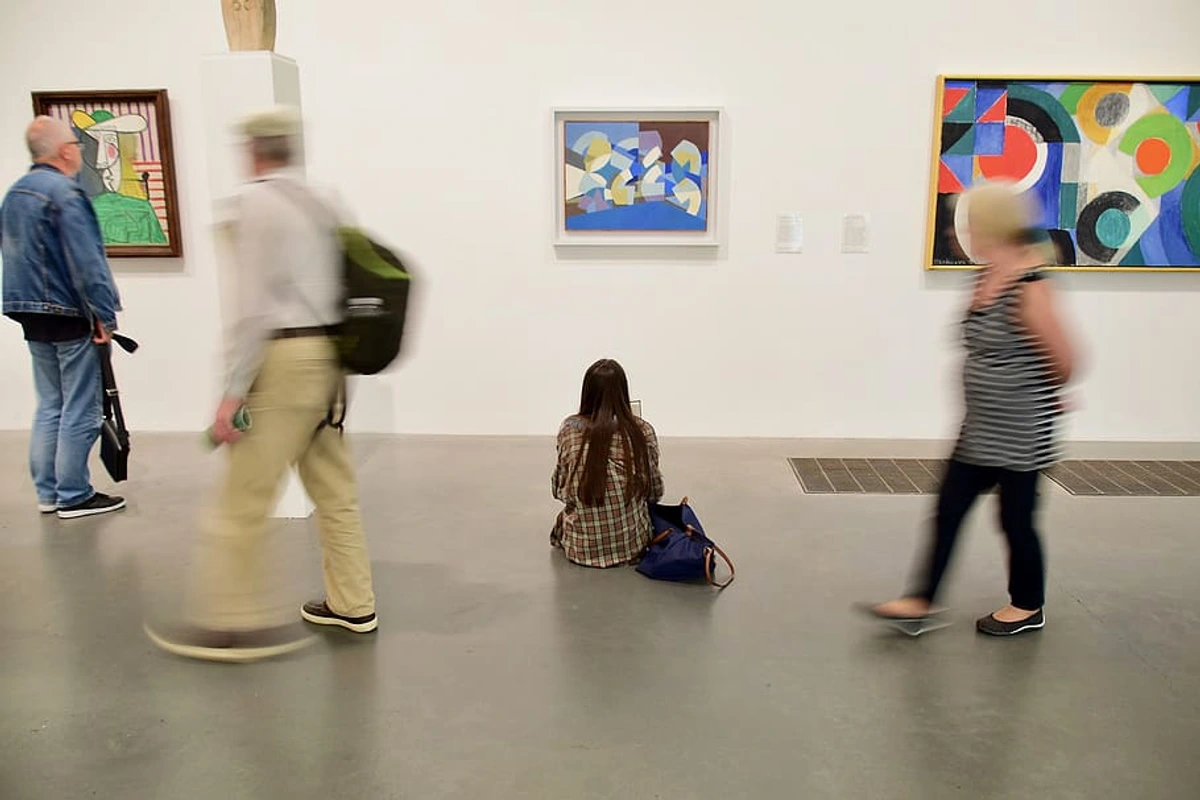
Frequently Asked Questions (FAQs) about Famous Living Artists
Q1: Why these specific artists? There must be others I should know! A1: Absolutely! This list highlights living artists who consistently demonstrate significant global clout – think major museum retrospectives (like Hockney's 2017 tour or Marshall's "Mastry"), deep critical engagement (consider the discourse around Richter or Steyerl), substantial market value, and undeniable influence on other artists and culture. We aimed for some diversity in style, origin (including figures from Latin America like Orozco and Salcedo, the Middle East like Hatoum, Africa like Anatsui and Mutu, Asia like Kusama and Murakami, Europe, and North America), and medium (painting, sculpture, textile art, ceramics like Perry or de Waal, digital art like Anadol or Cheng, sound art like Cardiff & Miller, etc.). But "top" or "most famous" is subjective, and honestly, countless other vital living artists are shaping contemporary art today, including many incredible Indigenous artists whose voices are crucial. Think of this as a gateway, a starting point for exploring further. The names here frequently pop up when people discuss the best contemporary artists or famous artists right now. You might find your next favorite by looking into artists inspired by these figures, exploring artists championed by curators like Thelma Golden, or exploring underrated artists yet to hit this level of fame. It's a bit like finding your favorite band – you start with the big names, and then you discover all the amazing artists they influenced or who are doing something completely different but equally compelling. The journey of discovery is half the fun!
Q2: How do you even measure "top," "famous," or "influential" in the art world? It seems fuzzy. A2: You're right, it's not like sports rankings! It's a blend of factors discussed in the "Understanding Influence and Recognition" section above. Influence often tracks with major museum shows (like those defining retrospectives at MoMA or Tate Modern), presence in important collections (best museums for modern art), serious critical writing (key monographs or essays by critics like Buchloh), winning major awards (Praemium Imperiale, MacArthur Grant, Turner Prize, Venice Biennale Golden Lion, Wolf Prize etc.), inclusion in key biennials (Documenta, Whitney Biennial, São Paulo Biennial), and demonstrable impact on younger artists. Fame can be broader – public recognition, media buzz, maybe even controversy (hello, Banksy!). Market value (understanding art prices) via auctions (Christie's, Sotheby's, Phillips) and top galleries (Gagosian, Hauser & Wirth, David Zwirner, Pace, Ropac, Miro, LGDR etc.) is a major indicator of status and demand, often driven by major collectors and their foundations (The Broad, Rubell, Pinault). It's about weighing these interconnected elements when assessing famous artists right now. It's a messy, complex system, but that's part of what makes the art world so fascinating, isn't it? Sometimes I think it's less about objective quality and more about who knows who, and who has the deepest pockets, which is... well, it's something.
Q3: Okay, be honest – who is the single most famous painter alive right now? A3: Ha! If only it were that simple. It really depends on your definition of "famous." For sheer public adoration, recognizability, and consistent innovation reaching a wide audience, David Hockney is a strong contender. For critical reverence, intellectual depth, and commanding the highest prices among serious collectors, Gerhard Richter is arguably unparalleled among living painters. For global superstardom transcending the art world, Yayoi Kusama is a phenomenon, though her installations might eclipse her paintings in public consciousness. For fame tied to specific, culturally resonant moments (like the Obama portrait), Kehinde Wiley achieved massive public visibility. There’s no single undisputed champ, but these individuals are consistently at the forefront of any discussion about the most famous painters alive today or painters of today. It's like asking who the best musician is – impossible to answer definitively, but fun to debate! And maybe the beauty is in the debate itself.
Q4: What's the difference between "Modern Artists Today" and "Contemporary Artists Today"? I see both terms. A4: Good question, it trips people up! Technically: Modern Art refers to a historical period, roughly from the 1860s (Impressionism) to the 1970s (end of Abstract Expressionism/Minimalism). Think Picasso, Matisse, Warhol – they are modern artists, but not artists alive today. Our guide to modern artists covers this era. Contemporary Art refers to art being made now, typically considered from the 1970s onwards, and definitely includes all artists that are alive and working today. So, if you're searching for "modern artists today," you likely mean "contemporary artists"—the focus of this article. These are the artists currently working and shaping the art world right now. Some contemporary work might reference or build on modernism, while others chart entirely new territory, sometimes engaging with concepts like Post-Internet Art, Relational Aesthetics, or specific group aesthetics like the New Leipzig School or legacies of the Pictures Generation. It's a subtle but important distinction, like the difference between vintage and current fashion. You wouldn't call a new dress "vintage," right? Same idea.
Q5: Where can I actually see work by these famous living artists in person? A5: Great question – seeing art in person is key! You'll find their work in: Major contemporary art museums globally (MoMA in NYC, Tate Modern in London, Centre Pompidou in Paris, LACMA in LA, etc. – see best museums for modern art). Top-tier international commercial galleries that represent them (like the Gagosian, Pace, David Zwirner, Hauser & Wirth, Thaddaeus Ropac, Victoria Miro mentioned earlier - check guides for cities like NYC, London, LA, or Paris). Key regional galleries like Blum & Poe (LA/Tokyo/NY) or Eigen + Art (Berlin/Leipzig) are also crucial. Significant private collections that sometimes open to the public (like The Broad in LA or the Rubell Museum in Miami). Major international art fairs (like Art Basel, Frieze, TEFAF, The Armory Show, Expo Chicago - tips here). Prestigious recurring exhibitions like the Venice Biennale, Documenta, Whitney Biennial, São Paulo Biennial, or Sharjah Biennial. Many artists also have dedicated foundations (like the Hockney Foundation or Anish Kapoor Foundation) or official websites showcasing their work, sometimes managed via their studio or artist archive. Major collector foundations like The Broad or Pinault Collection also have extensive online resources. Seeing the work in person is a completely different experience than seeing it online – the scale, the texture, the presence... it really matters. It's like the difference between seeing a photo of a concert and actually being there, feeling the bass in your chest.
Q6: This list is a great start, but how do I discover other important contemporary artists, especially emerging ones? A6: Excellent question! Finding artists before they hit peak fame is exciting. It's where the real discoveries often happen, I find. Here are some tips: Visit commercial galleries regularly, including smaller and mid-tier ones, not just the mega-galleries. Don't forget influential artist-run spaces or alternative galleries that often serve as incubators (historically, spaces like White Columns in NYC or Transmission Gallery in Glasgow played this role). Local art galleries can be treasure troves. Attend art fairs, both the huge international ones (like Art Basel Hong Kong or Frieze Los Angeles) and smaller regional or satellite fairs focused on emerging talent (like NADA or Liste). Follow reputable art magazines, websites, and critics. Key publications include Artforum, Frieze Magazine, ArtReview, The Art Newspaper, and online platforms like Hyperallergic. They often spotlight rising stars and review key exhibitions. Browse curated online platforms like Artsy (especially their 'Emerging' sections or Artsy Discoveries), Ocula, or gallery websites that dedicate sections to newer artists. Museum collection databases online are also great research tools. Even checking out what's available to buy online can lead you down interesting paths. Check museum websites for recent acquisitions or emerging artist showcase series (many museums have these, like MoMA PS1's "Greater New York"). Attend MFA (Master of Fine Arts) thesis shows at art schools – it’s literally seeing the next generation before they potentially hit the big time! You might spot the next big thing coming out of programs at Yale School of Art, Goldsmiths University of London, the Städelschule in Frankfurt, CalArts, or Columbia University School of the Arts, among others known for nurturing talent. Explore local art scenes, perhaps near cultural hubs like the museum in 's-Hertogenbosch, to uncover amazing talent who could become the next famous contemporary artist. Look for open studios or alternative art spaces. Learn how to identify emerging artists worth collecting – it's a skill you can develop by looking, reading, and trusting your gut! It takes effort, but the thrill of discovering an artist early is unmatched. It's like being a detective, but the reward is beauty instead of catching criminals.
Q7: Is market value (how much their art sells for) the best way to judge if an artist is truly "top" or important? A7: It's an indicator of demand, status, and perceived value within the art market ecosystem, absolutely (again, see understanding art prices). High prices, especially those record-breaking auction results at houses like Christie's, Sotheby's, and Phillips for artists like Hockney or Richter, certainly mean someone influential (often guided by savvy art advisors or major collectors/foundations) values the work highly. However, it's definitely not the only or necessarily the best measure of long-term artistic importance. Artistic innovation, critical reception over time (supported by influential curators and critics), influence on subsequent generations (think of Richter's influence on painters or Sherman's on photographers), institutional validation (major museum shows, biennales like Venice or Documenta), and historical significance are arguably more crucial for lasting impact. Market value can fluctuate wildly, be influenced by speculation or trends (like the brief frenzy around Zombie Formalism), and doesn't always correlate perfectly with profound artistic contribution. It's just one piece of the puzzle when assessing famous living artists today. Some truly vital work might not (yet) command sky-high prices. I try to look beyond the price tag myself – does the work make me feel something? Does it make me think differently? That's often more important in the long run. The market is a beast of its own, and sometimes it values things for reasons that have little to do with the soul of the art.
Q8: What about artists primarily using digital tools, AI, or NFTs? Are they considered among the "top" contemporary artists? A8: Yes, increasingly so! The art world is constantly adapting to new technologies. Artists deeply engaged with digital technology, video art (like Bill Viola or Pipilotti Rist), AI Art (like Refik Anadol, Mario Klingemann), Generative Art (prominent on Art Blocks with artists like Tyler Hobbs), virtual/augmented reality, Net Art (like Olia Lialina), BioArt (like Eduardo Kac), and internet-based practices are hugely influential and critically recognized. Figures like Cao Fei (multimedia exploring China's changing society), Ian Cheng (live simulations), Trevor Paglen (surveillance/data), or Hito Steyerl (video essays - included above) are major players. Post-Internet Art is a key concept here, reflecting art made in the shadow of the web. The ways we traditionally validate, collect, display, and conserve this type of work are still evolving compared to painting or sculpture, making it a super dynamic and important area among contemporary artists of today. Major institutions and curators are actively engaging with this work, signaling its growing importance. It's definitely a space to watch closely. It feels like the future of art is being written in code and data, which is both exciting and a little intimidating, like stepping into a new dimension.
Q9: Seriously, how does an artist even get to this level of fame and influence? How do emerging artists become established? A9: It's usually a long, challenging, and multifaceted journey! It typically involves: Developing a unique artistic voice and vision (often honed during studies at respected art schools/MFA programs like Yale, Goldsmiths, or the Städelschule). Consistently producing a strong, evolving body of work. Gaining representation by reputable galleries (often starting smaller, perhaps showing first at artist-run spaces or alternative venues like White Columns, before moving up to power players like Pace or Zwirner or key regional players like Eigen + Art). Getting noticed by curators, critics, and collectors through group shows, studio visits, and networking (art fairs like Expo Chicago or Frieze can be crucial here). Early support from influential curators can be pivotal. Landing solo exhibitions in progressively more significant venues, including major museum shows or biennales like Documenta, the Whitney Biennial, or the Venice Biennale. Receiving critical reviews and academic attention in publications like Artforum or ArtReview. Potentially winning grants, residencies, or major awards (like the Hugo Boss Prize or Turner Prize). Building relationships within the art world ecosystem – gallerists, curators, critics, collectors, advisors. Talent is essential, but so are immense dedication, persistence, strategic thinking, professional presentation, and arguably, a bit of luck and good timing. For collectors, learning how to spot and buy art from emerging artists is about engaging with artists early in this often-arduous journey, potentially discovering future famous artists. It's a bit like climbing a very tall, very slippery mountain – you need skill, determination, and a good support team. And maybe a grappling hook made of sheer stubbornness.
Q10: Are there any really famous artists today who only draw in the traditional sense? A10: It's quite rare for the most globally famous artists today (those with the level of fame discussed here) to work exclusively in traditional drawing (like just pencil or charcoal on paper). Most operate across multiple media, or their drawing practice heavily informs other primary outputs (like painting, animation, sculpture, or installation). However, as highlighted in the "Focus on Drawing" section, artists like William Kentridge are profoundly recognized for their specific drawing process ("Drawings for Projection") and its centrality – the preparatory work is the final piece in many ways. Others like David Hockney (with his prolific iPad drawings), Julie Mehretu (whose intricate drawings are foundational), Kara Walker (whose drawings inform her silhouettes), Tracey Emin, Raymond Pettibon (whose ink drawings define his style), Yoshitomo Nara (known for drawings on found objects), Vija Celmins (whose graphite works are major pieces), and Elizabeth Peyton have incredibly influential and visible drawing practices that are fundamental to their overall artistic identity, making them essential names when discussing famous drawers today. Drawing remains a vital medium, even if often integrated within a broader practice at the highest echelons of fame. It's a testament to the power of a simple line on paper, the most direct connection between the artist's hand and the idea.
Q11: What are some of the biggest challenges facing contemporary artists today? A11: Oh, where to start? It's a complex landscape! Beyond the universal challenge of making compelling work, contemporary artists grapple with things like: Market pressures – the need to produce work that sells, which can sometimes conflict with artistic exploration or critical depth. Staying relevant in a rapidly changing world, especially with the speed of digital culture and trends. Navigating the digital space – from online presence and social media to the complexities of digital art forms like NFTs and AI. Funding – securing grants, residencies, or institutional support can be incredibly competitive. Visibility – breaking through the noise to get noticed by galleries, curators, and collectors. Dealing with criticism – both constructive and the sometimes harsh or dismissive kind. And, perhaps most fundamentally, the constant internal struggle of maintaining creative integrity while trying to build a sustainable career. It's a balancing act that requires immense resilience, adaptability, and a deep belief in your own work. It makes my own struggles in the studio feel a little less lonely, knowing others are navigating similar waters. It's a marathon, not a sprint, and the terrain is constantly shifting.
Q12: How important are art schools and MFA programs for becoming a successful contemporary artist? A12: While there are notable exceptions (like some incredible self-taught artists or those who emerged from specific scenes like street art or punk), attending a respected art school or MFA program is often a significant pathway to success in the contemporary art world. These programs provide crucial time and space to develop your practice, receive critical feedback, build a network of peers and mentors (including influential artists and curators), gain exposure to art history and theory, and often have opportunities for early exhibitions. Programs like those at Yale School of Art, Goldsmiths University of London, the Städelschule in Frankfurt, CalArts, or Columbia University School of the Arts are known for producing influential artists. It's not a guarantee of fame, of course, but it provides a structured environment and valuable connections that can accelerate an artist's journey. It's where many artists first learn to articulate their ideas and place their work within the broader conversation, which is a skill just as vital as the making itself. It's like getting a map and compass before setting off on that mountain climb we talked about earlier.
Q13: I'm interested in collecting contemporary art. How do I start, especially if I'm not a millionaire? A13: Fantastic! You absolutely don't need to be a millionaire to start collecting. It's about passion and building relationships. Here's a quick guide: Look, Look, Look: Visit galleries (local ones are great!), museums, art fairs, and online platforms constantly. Figure out what resonates with you. Educate Yourself: Read art magazines, follow critics, research artists you like. Understand different mediums (prints vs paintings, mixed media, sculpture, etc.) and price points (understanding art prices). Start Small: Consider buying limited edition prints or works on paper by artists you admire. Many artists also sell smaller, more affordable original pieces. Explore Emerging Artists: This is where you can often find incredible work at accessible prices. Learn how to spot and buy art from emerging artists by visiting MFA shows, artist-run spaces, and online platforms dedicated to new talent. Buy What You Love: Don't just buy for investment (though that can happen!). Buy art that you connect with, that you want to live with. Build Relationships: Talk to gallerists (even if you're not buying yet!), artists, and other collectors. They can offer guidance. And yes, you can absolutely buy art online directly from artists or reputable platforms – just do your research! Starting a collection is a personal journey, and it's incredibly rewarding.
Q14: How does contemporary art engage with social and political issues? A14: Deeply and often! Many of the most influential contemporary artists today use their work to confront pressing social and political issues. Think of Ai Weiwei's activism against government oppression, Kara Walker's unflinching examination of race and slavery in America, Kerry James Marshall's work addressing the historical exclusion of Black figures from the art canon, Doris Salcedo's powerful pieces grappling with trauma and violence in Colombia, or Tania Bruguera's performances challenging censorship and power structures. Art can be a powerful tool for raising awareness, sparking dialogue, challenging norms, and even advocating for change. It can reflect the anxieties, hopes, and struggles of the time, making visible what is often hidden or ignored. It's not always comfortable, but it's often vital.
Q15: What's the role of the artist's studio or process in understanding their work? A15: For me, as an artist, the studio is everything. It's the laboratory, the sanctuary, the battlefield. Understanding an artist's process – how they work, the materials they use, their routines, even the chaos of their studio – can offer profound insights into their work. Think of William Kentridge's visible erasing and redrawing, which is integral to the meaning of his animations, or Vija Celmins's meticulous, almost obsessive rendering process. The choices an artist makes in the studio, the materials they choose (like Anselm Kiefer's use of lead or straw, or El Anatsui's bottle caps), the way they handle their tools, the sketches they make (famous drawers today) – all of this informs the final piece. Looking at an artist's studio or archive (if accessible) is like getting a peek into their mind, seeing where the magic (and the hard work) happens. It's why I share glimpses of my own timeline of work and process – it's all part of the story.
Further Exploration & Resources
Diving deeper into the world of contemporary art is a rewarding journey. Beyond visiting galleries and museums, here are some resources to keep you informed:
- Key Art Publications: Stay current with reviews, interviews, and criticism through leading magazines and websites like Artforum.com, Frieze.com, ArtReview.com, TheArtNewspaper.com, and Hyperallergic.com. They often feature both established and emerging famous artists today, alongside insights from leading curators and critics.
- Online Art Platforms: Websites like Artsy.net and Ocula.com offer extensive databases of artists, galleries, and artworks, including sections dedicated to emerging talent (Artsy Discoveries). Many museum websites also feature searchable online collections and information about past key exhibitions. These platforms are like digital treasure chests for art lovers.
- Artist Foundations & Archives: Some established artists create foundations to manage their legacy and support the arts (e.g., Hockney Foundation, Anish Kapoor Foundation, drawing inspiration from earlier models like the Judd Foundation). Researching an artist's official website or inquiring about their artist archive (often managed by their studio or gallery) can provide deeper insights, especially for scholars and serious collectors. Major collector foundations like The Broad or Pinault Collection also have extensive online resources. It's like getting a peek behind the curtain of their creative process.
- Auction House Catalogues: Catalogues from major houses like Christie's, Sotheby's, and Phillips provide detailed information on works coming to market, often including scholarly essays and provenance details. These are great for research, even if you're not planning to bid.
- Biennial & Major Exhibition Archives: Websites for major recurring events like the Venice Biennale or Documenta often maintain archives of past editions, offering a historical overview of participating artists and curatorial themes. Looking through these archives is like time travel through recent art history, seeing which artists and ideas were shaping the conversation at different moments.
Final Thoughts
Navigating the world of contemporary art and identifying the most influential living artists is an exciting, ongoing exploration, not a task with a finite answer. The artists highlighted here represent a diverse range of practices, ideas, and impacts, consistently shaping artistic conversations globally, often amplified by insightful curators and supported by dedicated collectors. They are the famous artists alive whose work demands attention, sparks debate, and inspires awe – sometimes even confusion, which isn't always a bad thing! I find that the art that challenges me the most is often the most rewarding in the long run. It pushes me to think differently, both about the world and about my own work.
But the art world is vast. Use this guide as a springboard. Explore the artists who resonate with you, dig into their influences (who were they looking at? The Bechers impacting Gursky, Pop Art influencing Koons?), consider the context provided by key exhibitions or critical texts, and discover the countless other talented living contemporary artists pushing boundaries every day across all media, from traditional painting and craft-based practices to digital art and sound installations. Perhaps even consider starting your own collection by exploring works available to buy online – you might just discover the next generation of influential voices, someone whose journey you can follow from the beginning, maybe even someone whose work I'll be writing about in a future update to my own artistic timeline. The journey of discovery is half the fun, and it's a journey that never truly ends. So go forth, look, think, and maybe even make something yourself. The art world is waiting.




